What to do in Guayaquil, Ecuador?
Lots!
This city can make for an excellent stopover during a trip to Ecuador, as there are so many fun things to do in Guayaquil. As long-term travelers in Ecuador, we decided to write this detailed Guayaquil travel guide to show why it’s worth the stop, reveal all the best things to do in Guayaquil, and further provide some Guayaquil travel & safety tips.
Is Guayaquil Worth Visiting?
Guayaquil is a popular transit hub for travelers, as it’s home to Ecuador’s second busiest international airport, is the only connection to the Galapagos Islands, and has a major bus terminal for those traveling throughout Ecuador and into Peru. Therefore, Guayaquil is often a place that travelers stop into when taking a trip through Ecuador.
Hence many visitors bound for somewhere else find themselves passing through this city and wondering “Is Guayaquil worth visiting?”
We see this question come up constantly in social media posts and travel forums.
So what’s the answer to all of these inquiries? Is Guayaquil worth visiting?
We say “sí, sí, sí!”
That’s a big “yes,” of course. Guayaquil is most definitely worth visiting in our opinion. There are actually a good number of really fun things to do in Guayaquil to keep curious travelers busy for a few days.
We’ll concede that there may be more worthwhile places to visit within Ecuador. After all, this is an amazing country that holds the Andes, the Amazon, the Galapagos, colonial cities, and great beaches. For anyone visiting Ecuador with extremely limited time, bypassing Guayaquil might make sense. Yet those on a short Ecuador trip will be missing out on all the awesome things to do in Guayaquil.
For anyone transiting through the city, Guayaquil can definitely be well worth staying for a day or two to discover all of the charms of Ecuador’s largest city.
Why Guayaquil Is Worth Visiting
Guayaquil has recently gone through a resurgence. Many successful renewal projects have been implemented throughout the city, in addition to an assortment of new attractions. What once may have been considered a big grimy city, now boasts upscale dining districts and sparkling clean waterfront promenades. It’s a changed place!
In the past decade alone, Guayaquil has developed the creative architecture of Ecuador’s tallest building, erected the largest ferris wheel in South America, opened up many trendy entertainment complexes, and introduced a handful of brand-new tourism initiatives.
These efforts have all brought so many interesting things to do in Guayaquil in recent years.
Guayaquil is a city that is clearly modernizing and making a concerted effort to appeal to travelers.
Yet Guayaquil still manages to maintain historic charms too. Established in 1538, this port town is one of the oldest cities in Ecuador. Some of the colorful architecture from centuries past can still be seen today while wandering around the hot and steamy city streets.
This is the tropics after all!
Yet the warm climate can come as a pleasant break for anyone having come from the high Andes running through Ecuador’s midsection. And despite the toasty weather, thankfully most establishments throughout Guayaquil have great air-conditioning systems and aren’t afraid to use them!
The warm weather adds to Guayaquil’s tropical character just as much as the broad River Guayas scenically lining the city’s shore. It’s this position on the briskly flowing river that greatly contributes to the city’s uniqueness and even provides a few things to do in Guayaquil.
Guayaquil is also a bargain travel destination to visit right now.
We found that almost all the main things to do in Guayaquil are completely free, or very inexpensive. Guayaquil is a particularly budget-friendly city in South America and it’s easily possible to explore Guayaquil on a budget. Know that all of the recommendations throughout this Guayaquil travel guide come with prices listed that all budgets can afford.
We’ve crafted this informative travel guide not only to show why Guayaquil may be worth a stop but also to help make the most of a short visit when passing through the city. Guayaquil has something for everyone to do, whether you’re into nature, culture, history, food, family-friendly activities, or nightlife.
Before reading on for all the details on what to do in Guayaquil, be sure to check out the video below. It puts into motion all of the highlights of the best things to do in Guayaquil to give some idea of what all of Guayaquil’s attractions are like.
Best Things to Do in Guayaquil Ecuador
The following list is what we found to be the 15 best things to do in Guayaquil! All of the points of interest discussed in this article are listed on the map below.
1) Stroll the Malecón 2000
If you were to do only one thing in Guayaquil, our suggestion is to take a leisurely stroll along the Malecón 2000. This pleasant 2.5-kilometer riverfront promenade not only takes in excellent views of the River Guayas, but winds its way through gardens, monuments, museums, restaurants, and shopping complexes.
While in Guayaquil, you’ll hear the boardwalk referred to as Malecón dos mil, which translates to Malecón two-thousand, the year the new waterfront stretch was opened.
The Malecón 2000 is often touted as one of the most successful revitalization projects in South America. What was once a dilapidated riverfront only a few decades prior, is now a thriving waterfront that’s filled with attractions and things to do.
The Malecón 2000 takes on different personalities depending on when visited. During a weekday it’s possible to enjoy the sprawling promenade almost entirely to yourself. Yet on a pleasant weekend afternoon, expect to find thousands of local families gathering for a day of fun on the river. It’s a nice scene to soak in and great people-watching.
There’s really a lot to do along the Malecón 2000 for both locals and visitors alike. In fact, many of the subsequent recommendations of things to do in Guayaquil can be found right along this malecón.
Here are just a few points of interest to look out for during a stroll down Guayaquil’s beautiful riverfront walkway. 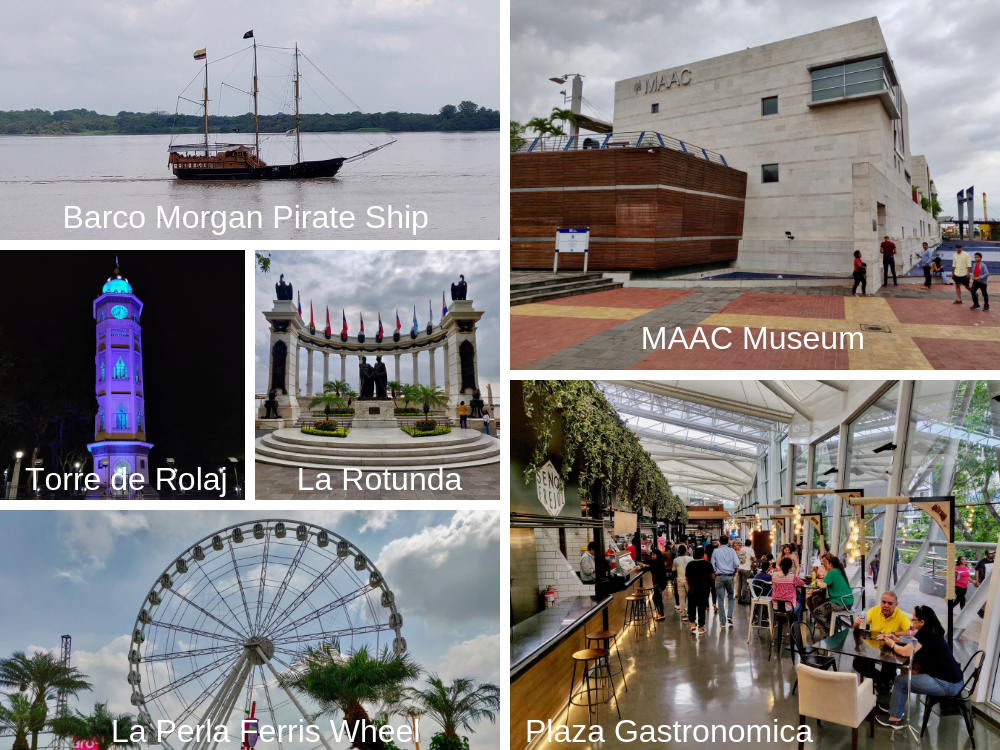
- MAAC – Museum of Anthropology (covered separately in this travel guide: #7)
- Cinema Malecón – Arguably the best movie theatre in Ecuador, with an IMAX theatre and 3D
- Museo de Miniatura – Guayaquil’s history is revealed through informative miniature displays
- La Perla – Giant ferris wheel (covered separately in this travel guide: #2)
- Malecon Garden – Park-like section of Malecón 2000 with gardens, coy ponds, and trees that attract birds
- La Rotunda – Rotunda monument to Guayaquil Independence
- Torre de Roloj – Iconic clock tower that is lit up at night.
- Guayas River boat cruise – Take a short boat tour on the Guayas River (covered separately in this travel guide: #4)
- Centro Comercial Malecón 2000 – Shopping mall, also known as C.C. Malecón
- Plaza Gastronomica Mercado del Rio – Indoor, upmarket food hall with nearly two dozen offerings ranging from international to Ecuadorian
- Patio de Comidas – Outdoor patio with quick-serve food stalls ranging from local seafood to KFC
- Palacio de Cristal – Vacant old South Market built by representatives of Gustav Eiffel
- Mercado Artesanal – Artisan market with Ecuadorian products to buy locally-produced souvenirs
💲Cost: Free to stroll
🕒 Hours: 7:00 am-Midnight, although shops and restaurants may not open until after 11:00 am.
⌚ Length of visit: 1-4 hours, or more depending on attractions stopped at
📍 Location: 2.5-kilometers along the River Guayas, midsection: here.
🔗 Official Website: Malecon 2000
2) La Perla: Take a Ride One of South America’s Largest Ferris Wheels
One of those attractions to check out along Malecón 2000 is definitely La Perla! “The Pearl,” as it translates to in English, was completed in 2015, becoming what was touted as the largest ferris wheel in South America upon opening.
While its height has since been surpassed by a ferris wheel in Brazil, La Perla remains the largest Ferris Wheel in Ecuador and soars to a height of 57 meters (187 feet) high above Guayaquil!
During the 12-minute rotation into the air, the giant ferris wheel offers incredible views of the river, the boardwalk, and the city skyline. Each gondola is air-conditioned too, which comes as a relief while walking around the hot city. And we found there to usually be surprisingly few people riding La Perla. So a lack of queuing and a private ride can be an added bonus to the experience.
You’re even more likely to avoid any crowds on a weekday visit. It’s then that prices of La Perla drop from a mere $5 to the bargain price of $3.50.
Be sure to bring a camera, as the pods on the ferris wheel provide some great photo opportunities when in a high position. And since La Perla is located on the northern end of Malecón 2000, the giant ferris wheel also has some of the best views of the colorful hillside community known as Cerro Santa Ana, which is another must-see place in Guayaquil, as we show in the next thing to do in Guayaquil.
3) Las Peñas: Climb the 444 Steps of Cerro Santa Ana
On the northern fringe of Malecón 2000 is where to find what is arguably the most beautiful neighborhood in Guayaquil, Las Peñas. It’s a historic neighborhood that dates back over 400 years!
The colorful hillside enclave of Cerro Santa Ana has retained the allure of bygone eras. Quaint homes are perched down narrow alleyways as family-run neighborhood bars offer a most-welcomed reprieve while climbing up the 444 steps leading to the top of Santa Ana Hill.
If there’s any doubt about how far you’ve ascended in Guayaquil’s heat, each step is numbered to provide a gentle reminder.
There are plenty of benches and quaint plazas along the way to pause and catch your breath. About every few dozen stairs will be a vendor selling water to help keep you cool and hydrated as you make your way to the top. Reaching step #444 provides a visual reward for the sweaty effort, by offering panoramic views of the Guayaquil and the river down below.
Also in the Las Peñas area at the base of Santa Ana Hill is a scenic cobblestoned street known as Numa Pompilio Llona. It’s a famous street in Guayaquil that really shows off its wooden colonial architecture. Behind the colorful wooden doors are many artsy stores to pop into.
But that colorful neighborhood is at the bottom of the hill.
You’ll want to be sure to climb the stairs from there to reach the top of Cerro Santa Ana. That’s where there’s a small church and the “El Faro” lighthouse is located. It’s possible to go inside this hilltop lighthouse for 360-degree panoramic views down below.
Lining the top of this hill are also canons that were once used to protect Guayaquil from pirates. Look beyond the canons and out onto the Guayas River and you may even see a pirate ship floating by. And that’s another great thing to do in Guayaquil!
💲Price: Free
🕒 Hours: El Faro (lighthouse) is open 10 am – 10 pm
⌚ Length of visit: About an hour or so
📍 Location: Just north of Malecon 2000. Start walking the main stairway at step #1: here.
4) Take a Guayas River Cruise
After spending much time admiring the River Guayas from shore, it’s almost a necessary thing to do in Guayaquil to get out onto that river and experience it! Boat rides down the Guayas River cruise along the malecon offering a fun way to see Guayaquil’s sites.
Boat trips along the Guayas River cruise by the colorful Las Peñas enclave and also past the southern reaches of Malecón 2000. On the opposite side of the river, the ship voyages past a tranquil island known as Isla Santay, which is actually yet another fun thing to do in Guayaquil!
We suggest going around 6:00 pm to be able to see Guayaquil in the dwindling sunlight as the city begins to light up and the night sky takes over.
The Henry Morgan Pirate Ship has been a fun and popular way to tour the Guayas River but has been temporarily closed during the past few years. Rumors swirl that this pirate ship will be returning to Guayaquil. In the meantime, there are now other Guayas River boat trips to pursue along the Malecon.
RiverDock offers an hour-long Guays River trip on a catamaran for $10/person, Thursdays through Sundays. Additional tours and parties are also available.
Transporte Kacique operates a double-decker boat with 40-minute tours up the Guayas River for a mere $4 per person (weekday prices). To get an idea of what to expect on their boat tours, you can check out their Instagram.
On weekends Kacique’s two-hour boat tours include a trip to Isla Santay, which is another great thing to do in Guayaquil, detailed next in this Guayaquil travel guide!
💲Price:
- Riverdock: $4 for a 40-min Guayas River tour, $6 for a 2-hour Isla Santay tour – weekends only
- Kacique: $10 for the hour tour
🕒 Hours:
- Riverdock: Thurs-Sun: 11:30 AM, 1:30 PM, 3:30 PM, 5:30 PM
- Kacique: Tuesday-Friday: 3:00 PM – 6:00 PM | Saturday-Sunday: 11:00 AM – 7:00 PM
⌚ Length of visit: depends on the tour – 40 minutes to 2+ hours
📍 Location:
- Riverdock: Located here, on the northern side of Cerro Santa Ana
- Kacique: Northern end of Malecon 2000, right here. Look for the Popeye statue and signs for “Paseo de Lancha” (Boat Ride).
5) Go Cycling around Isla Santay
Just across the river from the traffic and honking horns on the busy streets of Guayaquil lies a tranquil island that feels worlds away from the city’s urban sprawl. It makes for a fantastic escape into nature from so close to the city.
There are no cars at all found on Isla Santay, as a long pedestrian bridge only allows walkers and cyclists onto the island. Alternatively, boats also ferry people from Guayaquil’s Malecon 2000 to Isla Santay. Or visitors can simply walk. Yet we suggest renting a bike to get across the bridge and around Isla Santay.
The pedestrian bridge spanning over the River Guayas is 850 meters long. Once across, visitors will transition to a network of boardwalks and pathways that weave through a mangrove swamp, tropical forest, and palm canopies filled with hundreds of birds. In fact, over 100 different species call this island their home! The biodiversity on the island further extends itself to 65 different plants and even 25 mammal species.
It’s a fairly easy and pleasant stroll of nearly a kilometer across the bridge, plus an extra two kilometers further along the island’s boardwalks. Whether cycling or walking, plan for 6 kilometers (less than 4 miles) round trip. We found Santay Island to be a particularly nice place to experience from behind the handlebars! At the base of the pedestrian bridge is a bike rental station with plenty of bikes and helmets to send you on your way, $4 for a 3-hour bike rental.
On Santay Island, the winding trails lead to a small fishing village consisting of 235 people that make up 56 families who live in modest homes built up on stilts. Each home includes a living room, dining room, kitchen, two bedrooms, a bathroom, potable water, and solar power.
Within the eco-village, there’s also a small museum to learn about the nature of the island and the people who live here. There’s even a short boardwalk with platforms to view crocodiles.
A few snack bars greet visitors at the entrance of the village. But we recommend holding out for the barren open-air restaurant within the village that offers local dishes at inexpensive prices. For example, you can sit down to a lunch of seco de pollo for $2.50.
Near the village entrance, visitors can locate the trailhead of the Huaquillas Trail. That’s a half-kilometer walking trail that ventures more into the tropical forest canopy and where the most birds can be found. Mosquitos are thick on this trail too, so plan accordingly if you’re going to take the short trek.
Between this interesting little village and the nature found throughout the twisting pathways, Isla Santay is all literally a breath of fresh air so close to the big city!
💲Price: Free to enter Santay Island.
🚲 Bike rental info: It’s $4 for 3 hours, including helmet and bike lock. IDs are needed as collateral for bike rental. At the entrance to the village, there’s a bike rack to lock up your bicycles while walking around.
🕒 Hours: Hours: 6:00 am – 5:00 pm.
⌚ Length of visit: 2-3 hours
📍 Location: Approximately 2 kilometers further south after Malecon 2000 ends, right here. Take a taxi or Uber.
⚠️ Note: There were once two different bridges connecting to the island, but the bridge from Duran to Santay Island was knocked down by a ship accident and is still out of use, as of January 2024. So be sure to use the Santay Island bridge, located here.
6) Visit the Parque Histórico for Culture, History, and Animals
Parque Histórico is one of the Guayaquil’s top attractions. The “Historic Park,” as its name translates, is much more than just a park about history, although that’s a part of it. This Guayaquil attraction is set on sprawling grounds that contain three separate areas that flow into one another:
- Wildlife Zone,
- Urban Zone, and
- Traditional Area.
It’s another great thing to do in Guayaquil. Parque Histórico only has a modest entrance fee ($4), although you will need to budget an extra $5 for the Uber/taxi to reach this attraction, located about 15 minutes from the downtown/Malecon area. Yet we found it to be worth the short trip to spend a few hours exploring each of the different zones.
The Wildlife Zone gives a glimpse into local Ecuadorian fauna while meandering across a boardwalk trail. It’s essentially a zoo of sorts, but the animals are living in fairly spacious recreations of their natural environments, rather than in cages.
The Urban Zone is like a living history museum, full of beautiful architecture from Ecuador’s colonial heydays of the late 1800s and early 1900s.
Some of the buildings are recreations while others are historic dwellings that were moved to the Parque Histórico and restored. On weekends, costumed performers have been known to amble about the historical buildings, adding to the charming historic atmosphere.
Of Parque Histórico’s three sections, we found the Urban Zone to be the highlight.
For anyone looking on Guayaquil, then consider stopping into the onsite 5-star restaurant, Casa Julian, located within Parque Histórico’s Urban Zone. This notable restaurant boasts an ultra-elegant atmosphere with high-end gastronomic delights to match the unique setting.
Finally, the Traditional Area gives a glimpse into Ecuador’s rural life and agriculture. Recreations of farm plots and cocoa plantations are found in the Traditional Area.
These three zones of Parque Histórico all add up to a must-visit Guayaquil attraction that we recommend venturing beyond downtown to experience.
💲Price: $4 for adults, $2 for children up to 12 years old.
🕒 Hours: 9:00 am – 5:00 pm on Wednesday-Sunday
⌚ Length of visit: About 2 hours or so
📍 Location: It’s about a 15-minute Uber ride (~$5) from downtown Guayaquil or Malecon 2000. Located here.
7) Check Out the Museum of Anthropology and Contemporary Art
While strolling along the Malecon 2000, the Museo Antropologico y Arte Contemporaneo, abbreviated as MAAC, should be a compulsory stop when traveling to Guayaquil.
Admission to MAAC is entirely free, it’s well air-conditioned, and in a convenient location on the Malecon 2000. But the real reason to check out the museum is for the Ecuadorian archeology on display and the funky art exhibits.
Soon after entering the modern MAAC building with tall ceilings, visitors are first pointed to the contemporary art half of the museum. There are a few different halls filled with peculiar, interesting, and thought-provoking pieces of modern artwork.
The Anthropological half of the MAAC displays dozens of ancient artifacts that well predate the Spanish arrival. Many elaborate ceramic pieces on display were found throughout Ecuador.
It’s a nice collection. Those who can’t read Spanish should realize the signage does not have translations. To learn more about these exhibits, consider downloading a visual translation app, like Google Translate (free: Android, iPhone), to have the ability to translate the informative plaques when visiting MAAC.
Of the half-dozen museums we’ve visited in Guayaquil, we found the MAAC to not only be the biggest but also the best. It certainly is well deserving of being one of the 15 best things to do in Guayaquil.
💲Price: Free
🕒 Hours: Tues-Fri 8:30 am – 4:30 pm, Weekends 10 am – 4 pm.
⌚ Length of visit: 1-2 hours
📍 Location: It’s on the northern end of the Malecon 2000. Located here.
8) Find the Iguanas in Parque Bolivar
Parque Bolivar is a quick yet quintessential and iconic stop on any Guayaquil itinerary. It’s here where you can find Guayaquil’s resident land iguanas lazily hanging out right in the middle of the otherwise busy city. That’s why the park is also known as Parque de las Iguanas, or Iguana Park.
This city square with iguanas is also referred to as Parque Seminario, but don’t let the multiple different names confuse you. It’s all the same place. This is where to find the iguanas in Guayaquil.
For those who have come to the iguana-fill park after visiting the Galapagos, you may not be overly impressed by the reptilian residents.
But do know that this is a different species of iguana than what is found on the islands. And for anyone heading to the Galapagos, this Iguana Park can be a great precursor of what’s to come.
It’s a nice yet small park that’s centrally located downtown and only three blocks away from the Malecon 2000. The iguanas are wild, roaming around the park as they please. Yet they are very tame, as locals come to feed them vegetables and flowers, sometimes even by hand.
Guayaquil’s Iguana Park is in a pleasant setting, located right in front of the Metropolitan Cathedral. The many benches throughout the park can make for a nice place to take a break and watch the reptiles.
💲Price: Free
🕒 Hours: Open 24 hours, but best to go during daylight
⌚ Length of visit: About 15 minutes
📍 Location: It’s three blocks west of the Torre Morisca on Malecon 2000. Located here.
9) Explore Downtown Guayaquil
The Iguana Park isn’t the only place in downtown Guayaquil worth straying off the Malecon for. That may be the most popular attraction amidst Guayaquil’s downtown, but it’s worth taking a wander further throughout downtown Guayaquil to explore other parks, monuments, churches, and architectural gems. It’s a safe bet to do this during the day.
Below are a few suggestions on points of interest to see in downtown Guayaquil, all of which are also marked on the map we made to use with this travel guide:
- Municipal Palace – Architectural treasure of Guayaquil that commemorates its independence and is further surrounded by monuments and fountains
- Arosemena Passage – Ornate passageway running through the Municipal Palace
- Metropolitan Cathedral – Grand cathedral in front of the Iguana Park (bottom right in photo below)
- Iglesia San Francisco – Beautiful colonial church (upper left in photo)
- Avenida 9 de Octubre – Main commercial corridor of Guayaquil full of department stores and shops
- Parque del Centenario – The largest park within downtown Guayaquil contains many monuments (upper right in photo)
For those who may desire more information about each of these places or don’t feel comfortable wandering around downtown Guayaquil on your own, consider taking a guided tour of Guayaquil.
This Half-Day Guayaquil City Tour has 9 am and 2 pm pick-ups and is a great way to get acquainted with the city. It’s a perfect overview for anyone new to Guayaquil or someone with only a day in Guayaquil who wants to see the main sights.
This city tour visits all of the downtown highlights and then continues further to the Las Peñas neighborhood and Cerro Santa Ana. Check Viator for current availability and up-to-date prices.
10) Roam around Guayaquil’s Other Boardwalk: Malecón El Salado
Malecón 2000 gets all the love in Guayaquil. And deservingly so, as it’s a very enjoyable waterfront promenade. But it’s actually not the only malecón in town.
Malecón El Salado is Guayaquil’s other malecón and sports a different vibe compared to the main Malecón 2000.
Walking the entire length of the Malecón El Salado gives visitors glimpses into working-class neighborhoods that are a contrast to the built-up and more polished downtown area and Malecón 2000. Yet these neighborhoods lining Malecón El Salado carry their own special charm.
Malecón El Salado can be nice for a sunset stroll too, given its westward-facing location.
There are also snack bars and casual open-air restaurants to stop at, all along Malecón El Salado. These snack food stalls are open in 2024, some with lively music on weekend evenings.
The Plaza de Mariscos (Seafood Plaza) makes for a particularly inviting outdoor patio to pause along the boardwalk. As of Jan 2024, this section of casual eateries is still temporarily closed. So check the status during your visit if you want to try local fish in the open-air environment or simply enjoy some cervezas.
And while Malecón El Salado makes for yet another nice place to stroll in Guayaquil, there are a few other things to do here that deserve separate mentions of their own. The next few recommendations on this list of things to do in Guayaquil can be found on Malecón El Salado.
💲Cost: Free to stroll
🕒 Hours: 6:00 am – 9:00 pm
⌚ Length of visit: An hour or so, depending on if you’re stopping to eat, drink, or partake in one of the subsequent recommended activities.
📍 Location: Along the Salado Estuary. A good central point to have a taxi or Uber drop you off is on the South end near Aguirre, here.
11) Go Row-boating around the Estero Salado
There’s a small rowboat rental pier along the Malecón El Salado, right nearby the Plaza de Mariscos. You get a workout by paddling around the river on your own. Or opt to hire a paddler to do the work for you, to instead enjoy a romantic and leisurely row around the estuary.
Mangroves line one side of the riverbank and the boardwalk lines the other. Additional rowboats fill this section of the skinny river, as does the occasional fisherman.
The thirty-minute paddle takes 1-4 passengers under a few bridges and past the Monumental Fountain of Dancing Waters, which is another Guayaquil attraction of its own merit.
💲Cost: $4 per boat (not per person) + $2 for a rower
🕒 Hours: Go during daylight hours, no official hours posted.
⌚ Length of visit: It’s a 30-minute paddle
📍 Location: The small pier is in front of the Seafood Plaza. Located at this point. Look for a blue sign in front of the ticket booth that reads “Embarcaciones Recreativas” (Recreational Boats).
12) Watch the Monumental Fountains of Dancing Waters
This dancing fountain display is an awe-inspiring attraction in Guayaquil. The fountains blast up 40 meters (131 feet) high in the air. Although the fountains are on during the day, it’s most special to visit them in the early evening.
When night falls in Guayaquil the fountains light up and become choreographed to music. It’s really quite the spectacle and more impressive than we had envisioned. The music ranges from Italian opera to local tunes specific to Guayaquil.
It’s comparable to Vegas’s famed Bellagio Fountains, albeit slightly smaller in size. Yet Guayaquil’s fountains go on to dance much longer.
There’s a platform adjacent to the fountains for an up-close view. Yet we recommend watching them from the Malecón El Salado on the opposite side of the river. There’s a snack bar selling beers, empanadas, and more. And the tables set up on the upper level make for an inviting place to sit back with a cerveza and enjoy the show.
If you’re in Guayaquil on a weekend evening, don’t miss seeing the Monumental Fountain of Dancing Waters come to life.
💲Cost: Free
🕒 Hours: Weekends at 7:00, 7:30, and 8:00 pm.
📍 Location: The fountains themselves are here. We suggest watching from across the river on the upper platform, located here.
13) Eat Cangrejo Criolle – That’s Crab!
If you only have one night in Guayaquil consider making dinner plans to enjoy one of the city’s most iconic dishes: cangrejo criollo, or creole crab! The experience of eating cangrejo criollo is really one of the best things to do in Guayaquil. And it is an experience!
These red mangrove crabs are a local favorite in Guayaquil. After the crabs are boiled, it’s upon you to do the rest of the work. That’s half the fun!
Mallets are brought to the table to help reach the crab meat after tearing into the claws and legs with your bare hands. The entire restaurant is filled with a symphony of people pounding away on the tables. Bibs help to protect from the inevitable resulting splatter. But these crabs are every bit as delicious as they are messy to eat.
These red crabs are boiled up in a big pot of beer after all, along with spices like cumin, oregano, and garlic to perfectly flavor the delicate crab meat. It takes some time and energy to crack into each of the crab legs, yet each tasty bite will remind you that it’s definitely worth the effort!
So where’s the best place in Guayaquil for cangrejo criollo? That’s a matter of opinion, of course. And there’s no shortage of crab restaurants or opinions about the matter.
Here are just a few suggestions among the dozens of crab restaurants in Guayaquil:
- Red Crab is recommended in many popular guidebooks and has three locations, all north of downtown.
- Los Cangrejos de Pepito Loza receives the highest ratings on TripAdvisor among restaurants serving cangrejo criollo, located a bit northwest of the airport.
- La Pata Gorda was most often recommended to us by locals and has a central position near Iguana Park, among other locations.
Whichever creole crab restaurant you choose, just slap on a bib and get cracking!
💲Cost: Varies by restaurant. The cangrejo criollo at La Pata Gorda costs $12.77 (2024 prices)
🕒 Hours: Check with each restaurant.
14) Drink Pilsener Right Where the Beer Was Born
Pilsener is Ecuador’s national beer, which can easily be found all throughout the country. Yet Guayaquil presents a unique opportunity to drink this cerveza right where it originated in Guayaquil’s colorful Las Peñas neighborhood, having been brewed here since the late 1800s!
What began brewing up in an icehouse on the colorful hill way back in 1887 has become Ecuador’s most popular beer. Pilsener is particularly celebrated in Guayaquil and even a riverfront plaza has been named in its honor.
The Pilsener Brewery had its origins along the base of Cerro Santa Ana near the Plaza Pilsener. The original 1800s brewery is long gone, yet there are plenty of places in this area, and all throughout Guayaquil, to enjoy this longstanding Ecuadorian brew.
While you can order a Pilsener at virtually any bar or restaurant across Guayaquil, we’d suggest walking up the steps near Plaza Pilsener, where a nice family will serve you Pilsener in a giant cup from the bottom floor of their apartment. It’s here you can gaze down onto the location of that original riverfront brewery.
Also nearby, is a small beer museum, Museo de la Cerveza, where you can learn a bit more about Pilsener and the history of beer in Ecuador. It’s certainly not a must-do, but perhaps a quick stop if in the area and are enthusiastic about beer.
But how is this Ecuadorian Pilsener beer?
Although not as complex or tasty when compared to some of Ecuador’s better artisanal beers, Pilsener just hits right as a nice thirst-quencher in Guayaquil’s tropical heat. Ironically, this beer is not a true pilsner as the brand name would suggest; but rather a pale lager beer (like Budweiser, Corona, etc). Whatever the case, Pilsener is always welcomed and refreshing after a day of roaming around Guayaquil.
💲Cost: Beers in Guayaquil tend to be priced at $1 on the low end, and $4 on the high end.
📍 Location: The small beer museum is here, right next to where the original Pilsener brewery once stood. Our secret little overlook with big cheap Pilsener beers is located here on Callejon Del Galeon.
15) Take a Day Trip from Guayaquil
For those who are staying in Guayaquil for more than a few days, consider taking a day trip or two to fill the extra time after checking out all the other aforementioned things to do in Guayaquil. From Guayaquil there is an interesting train trip to take, a few different eco-tours to pursue, and even cocoa plantations to visit!
Here are a few suggested Guayaquil day trips to consider.
🛶 Manglares Churute – This is Ecuador’s largest mangrove reserve that is particularly known for the endemic birdlife that abounds here. Trips to Manglares Churute usually include a walk around the dry forest and a small motorized canoe ride around the mangroves for birdwatching. This small-group tour of the mangroves includes those experiences, in addition to a chocolate tasting at a cocoa plantation along the way! Check availability and prices.
🐒 Bosque Protector Cerro Blanco – This dry tropical forest is known for its bird and wildlife, particularly the resident monkeys. A series of guided hikes are offered up the hilly terrain that is best pursued on the weekend, as people visiting during the week have been turned away. It’s located about 30 minutes away from downtown Guayaquil and can be reached by public bus or even Uber. Or consider this guided tour of Cerro Blanco.
🐬 Puerto El Morro – Approximately 90 minutes from Guayaquil, towards the coast is a series of waterways known for its wildlife and particularly dolphins. Taking a small boat tour here usually reveals the wild dolphin residents in addition to endemic birds in the tropical setting. Try this Puerto El Morro tour on Viator.
🚂 Tren de la Duraza – (temporarily closed, expected to reopen) The “Train of the Sweetness” from Guayaquil to the town of Bucay has not been operating during the past few years. Government officials announced that Ecuador’s tourist trains (including this train from Guayaquil) would return in 2023. Yet as of January 2024, there still has been no official announcements regarding opening dates. So check back to see if this train route may have returned, to see farming plantations while learning about cocoa and sugar production before ultimately arriving in the cloud forest environment of Bucay for a waterfall trek.
Travel Tips and Guayaquil Safety
In addition to all the things to do in Guayaquil, we want to impart some tips and safety advice to make this Guayaquil travel guide complete.
Many travelers ask “Is Guayaquil safe?” So we’re here to shed some light on that topic.
Guayaquil sometimes carries an unsafe reputation and crime has been increasing in recent years. The situation on the ground is changing rapidly. Travelers to Guayaquil must carefully research the current situation and make a personal risk assessment.
Despite ongoing issues and safety concerns, we found Guayaquil to be a welcoming city in which we did not witness such threats in the areas mentioned throughout this guide where tourists go. Guayaquil has come a long way over the past few decades to increase safety in Guayaquil and make tourists feel safe. And we do.
Guayaquil is largely a big, beautiful, friendly, and modernizing city. The tourist areas of Guayaquil are places where children play freely and families come out of their apartments to enjoy life. Plentiful tourist police in touristic areas help to ensure that. We wouldn’t let safety concerns prevent a visit to Guayaquil.
That said, there are precautions to be aware of while roaming around Guayaquil.
There are bad neighborhoods in Guayaquil that are easily avoided, like most major cities around the world. Gang violence has flared up in Guayaquil during the past few years. Yet such incidents have been largely away from Guayaquil’s tourist areas mentioned throughout this travel guide.
Recent government warnings have warned of an increased risk of crime south of Portete de Tarquí Avenue, which is away from the things to do listed throughout this travel guide. Locals in Guayaquil have warned us against venturing into this area too, particularly close to the port. It’s easily avoided.
Meanwhile, in the touristic areas of Guayaquil, perhaps the biggest safety concern is simply petty theft. There have been reports of pickpockets targeting tourists. It’s not rampant and widespread, but it has been known to occur. Personally, we’ve never noticed pickpockets in Guayaquil, as we have observed in Quito and other parts of South America.
Yet a threat of pickpockets and theft does exist in Guayaquil. This should be no cause for major concern or paranoia when walking around the city. But it’s a good idea to simply be aware and keep vigilant of your pockets and belongings, particularly when in any crowds.
And while Guayaquil’s tourist areas are typically considered safe for travelers, it can be possible to stray off the beaten path and into trouble. It’s best to stick to the main tourist areas, particularly so at night.
There’s also a known scam in Guayaquil involving false taxis. We recommend only using registered taxis. Better yet, use Uber which is trackable, has security features, and is largely deemed as one of the safest ways to get around Guayaquil.
Really, to stay safe in Guayaquil is simply to use common sense tactics that travelers would use in any large city. Don’t get involved with drugs. Don’t get into a stranger’s car. Don’t wear flashy jewelry. Be vigilant of your surroundings. Don’t carry large sums of money. Stick to the tourist areas. Don’t get drunk. Stay clear of bad neighborhoods.
That’s our two cents about safety in Guayaquil, based on our experience in the city. For a more objective outlook, check the up-to-date government warnings your home country advises. Here are the official government safety warnings for Ecuador from the following countries:
🇺🇸 US Department of State – Travel Advisory for Ecuador
🇬🇧 UK Foreign Travel Advice for Ecuador
🇨🇦 Government of Canada: Ecuador Safety & Security
🇦🇺 Australia Smart Traveller Safety & Security Advice
🇳🇿 New Zealand Safe Travel: Ecuador
Guayaquil Travel Tips You Need to Know
Before packing your bags, consider the following Guayaquil travel tips.
🏨 Where to Stay in Guayaquil
Visitors should consider staying around downtown Guayaquil and near Malecon 2000. This is the location of the majority of the things to do listed throughout this Guayaquil travel guide. Hence staying in this area will be the most convenient and many locations will be walkable from your hotel. If staying outside of this area, you’ll need to take many Ubers or taxis. So be sure to factor that into your decision.
Within the downtown area of Guayaquil, there is a wide range of accommodations, from hostels and budget hotels to higher-end luxury hotels. Whether a cheap place or upscale, we found that most hotels around Guayaquil offer good value for the price.
With nearly 400 Guayaquil properties listed, we’ve found that Booking.com has the most hotels to choose from and usually the best prices too. Search Guayaquil hotels during your travel dates to find the perfect place for your trip.
☀️ Beware of the Sun
Guayaquil is hot, hot, hot. Don’t forget to pack sunglasses and a hat. Also, be sure to pack sunscreen with you since it tends to be much more expensive in Guayaquil compared to US prices. Use at least SPF 50. So snag a good price for sunscreen on Amazon before getting on the plane to Ecuador.
☔ Know the Rainy Season in Guayaquil
If traveling through Guayaquil between January through April, be sure to pack a good rain jacket or a compact travel umbrella like this. This is the rainy season. While it doesn’t rain all day, every day during those months, it will likely rain at some point during a Jan-April visit.
🆔 Carry your ID around Guayaquil
It’s not only the law in Ecuador. Your ID will be required for most of the free things to do listed in this Guayaquil travel guide. Also, bars often require an ID upon entry regardless of age. IDs are further required for any credit card purchases.
💸 Cash is King in Guayaquil
More and more places are beginning to accept credit cards in Guayaquil, but cash is more often the norm. The currency in Ecuador is the US dollar and ATMs are frequent to withdraw.
💵 Use Small Bills
Almost anywhere in Guayaquil won’t accept $50 or $100 bills. Come with smaller change as you’ll otherwise have a very difficult time breaking that $100 note. Even twenties can sometimes be cumbersome to break.
🚱 Don’t Drink the Water in Guayaquil
The tap water in Guayaquil is generally not safe to drink. Use bottled water only. Also, consider traveling with this compact LifeStraw. We have one and it’s come in handy a few times during our travels when water wasn’t drinkable and stores were closed.
💦 Stay Hydrated
You’ll likely sweat a lot more in Guayaquil than you’re accustomed to at home. Make it a point to stay hydrated and drink lots of water. It’s easily found all over the city.
🚽 Know Where To Go in Guayaquil
After drinking all that water, you’ll certainly need to pee. Thankfully, there are many free public toilets all throughout both malecons and most of Guayaquil’s tourist areas. You’ll just need a dime (10 cents) to buy some toilet paper. And remember, in Ecuador, used toilet paper goes in the bin, not in the toilet.
🦟 Keep Mosquitoes Away
Being the tropics, mosquitos are buzzing around Guayaquil. Zika has almost disappeared from the region, although the rare case still pops up. It’s best to protect yourself from those pesky disease-carrying mozzies. You can use the heavy-duty stuff with DEET but we find that this natural Repel Lemon-Eucalyptus repellent works well, isn’t as harsh on your skin, and is better for the environment, particularly if you’re going in the water.
💬 Learn Some Basic Spanish
There’s not much English spoken along the streets of Guayaquil, so it can be a great idea to learn some basics before a trip here. Even simple pleasantries can go a long way with pointing and a smile. We like to use Babbel as an easy, fun, and inexpensive way to learn Spanish. With each lesson just 10-15 minutes, it’s something we can always work into the day and the associated app even lets us use it on-the-go. Right now you can use this discount link to save 25% off a 6-month or longer subscription.
⚠️ Important: Be Sure to Have Travel Insurance in Guayaquil
You never know what could go wrong during a trip to Guayaquil, from a minor incident like lost luggage or flight cancelation to a major disaster like an earthquake or a tsunami. Travel insurance will not only come to your rescue to help you out of a jam but will also cover those unexpected costs.
Whether you get into a car accident or get pickpocketed along Guayaquil’s malecon, travel insurance will come to the rescue. We always use travel insurance while roaming around Ecuador and recommend it. We like World Nomads, which has what we’ve found to have the best price and coverage combination (particularly for longer trips). Enter the dates for your trip to get a quick estimate.
💼 What to Pack for Guayaquil
Pack for Guayaquil as you would for any hot weather destination. We recommend plenty of dry-wicking clothing and sun protection. Be sure to check out our Ultimate Travel Packing List for all our packing tips and travel gear ideas.
Traveling to Guayaquil, Ecuador?
We hope this Guayaquil travel guide has helped to show all of our favorite things to do in the sprawling city in Ecuador. If you’ve used this guide to help plan a trip to Guayaquil, please let us know in the comments, as we always love to hear from people who may have stumbled across our posts.

Or if you have any questions as you plan a trip to Guayaquil, feel free to ask and we’ll try to answer.
Finally, if you’ve been here and have your own favorite thing to do in Guayaquil, let us know so we can check it out next time and keep this post up-to-date!
Where to Next in Ecuador?
If you found this Guayaquil Travel Guide helpful, then you may be interested in other travel guides we’ve published about Ecuador.
🇪🇨 For a comprehensive round-up on traveling Ecuador, be sure to check out our article that sums up the best experiences and shows exactly where to go.
Read: 20 Best Things to Do in Ecuador & Interesting Places to Visit
🐢 Did you know that you don’t have to take a pricey Galapagos tour? You can actually visit the Galapagos independently for cheap! This post reveals exactly how it’s possible.
Read: How To Afford the Best of the Galapagos: Budget Travel Tips
⛪ Cuenca is Ecuador’s third-largest city and a colonial gem in the Andes that’s been designated as a Unesco World Heritage Site. The city is nicknamed the “Athens of Ecuador” for its history and culture, yet lots of adventure also abounds in the mountains that surround it. And it’s all less than a 4-hour drive from Guayaquil!
Read: 20 Best Things To Do in Cuenca Ecuador: Travel Guide
🚠 Like Guayaquil, many people tend to bypass Quito. But there is lots to do. There is even more going on in Quito than in Guayaquil! So check out our big fat Quito Travel Guide:
Read: 20 Best Things To Do in Quito Ecuador: Travel Guide
🏔️ From Guayaquil, it’s a 4-5 hour bus up into the Andes to Riobamba. This city sits at the base of Ecuador’s tallest mountain and offers so many adventures into the Andes.
Read: Riobamba Ecuador Travel Guide: Best Adventures & Things to Do
Publishing note: This article about the best things to do in Guayaquil was originally written in January 2019 and most recently updated in January 2024, to reflect current conditions and up-to-date info.
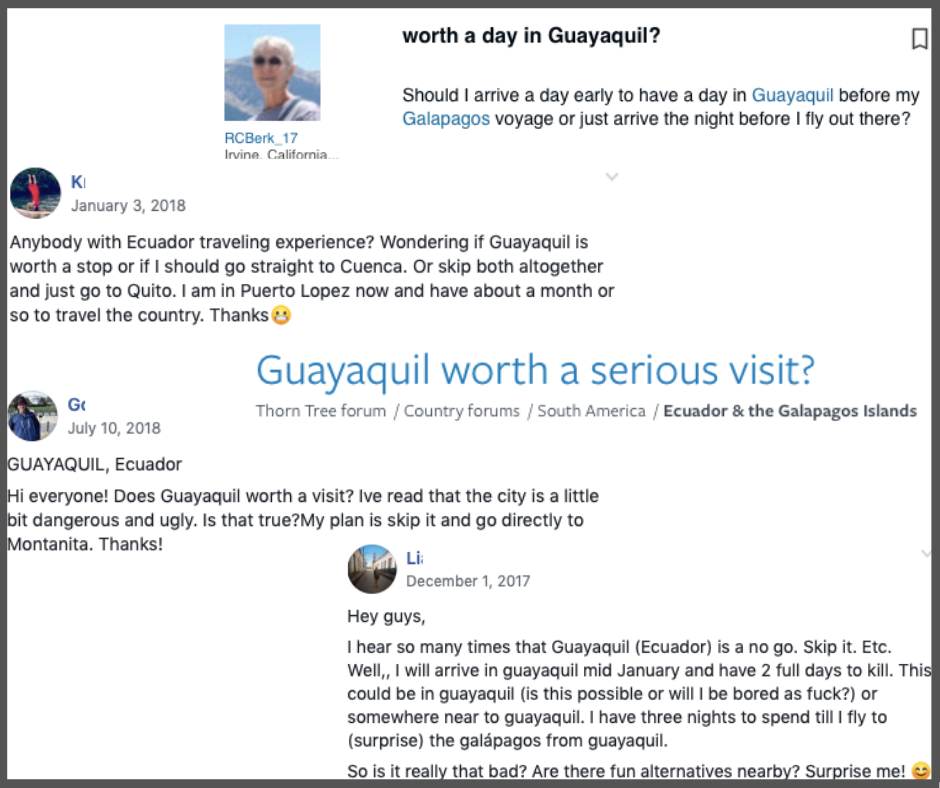
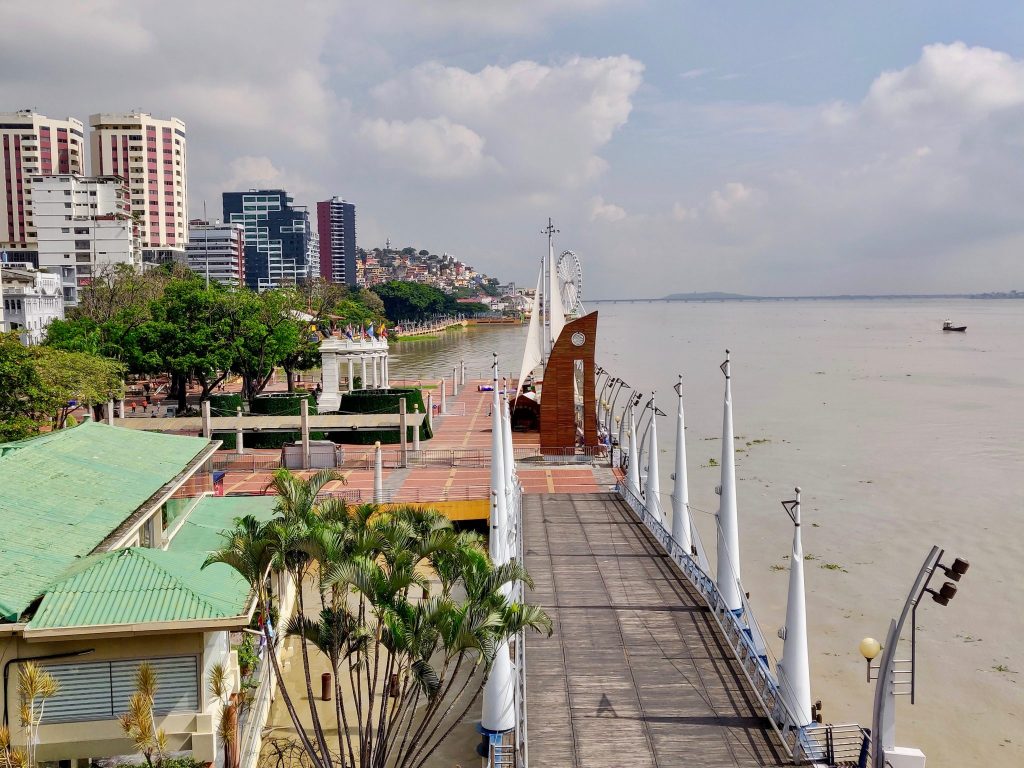
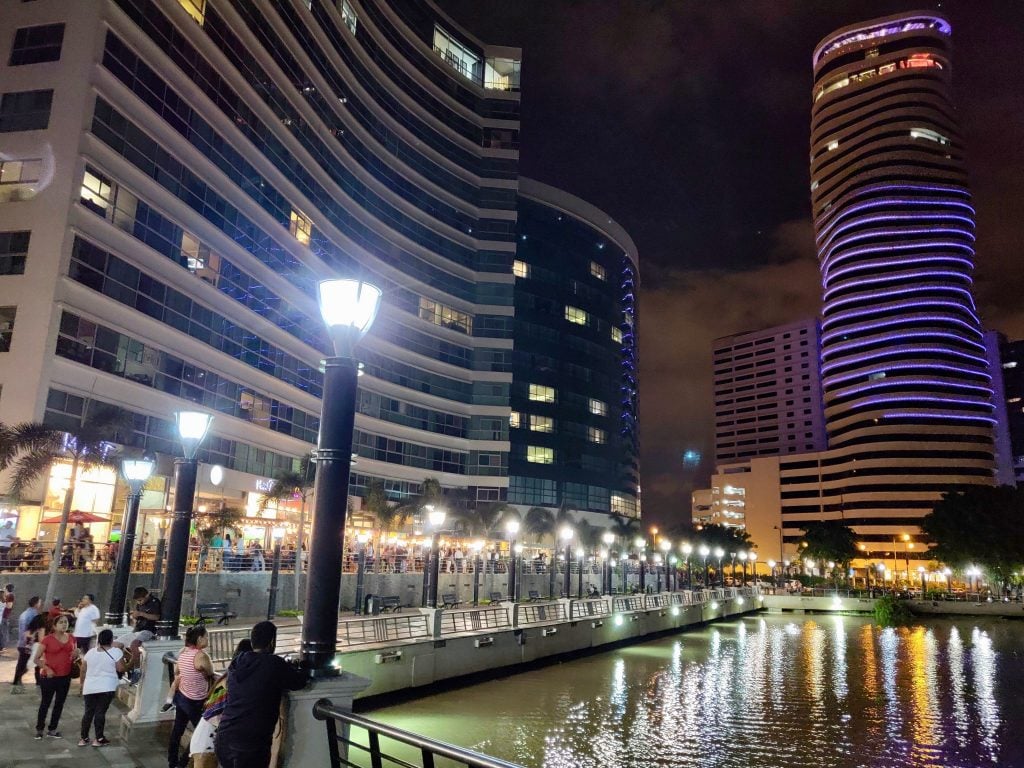
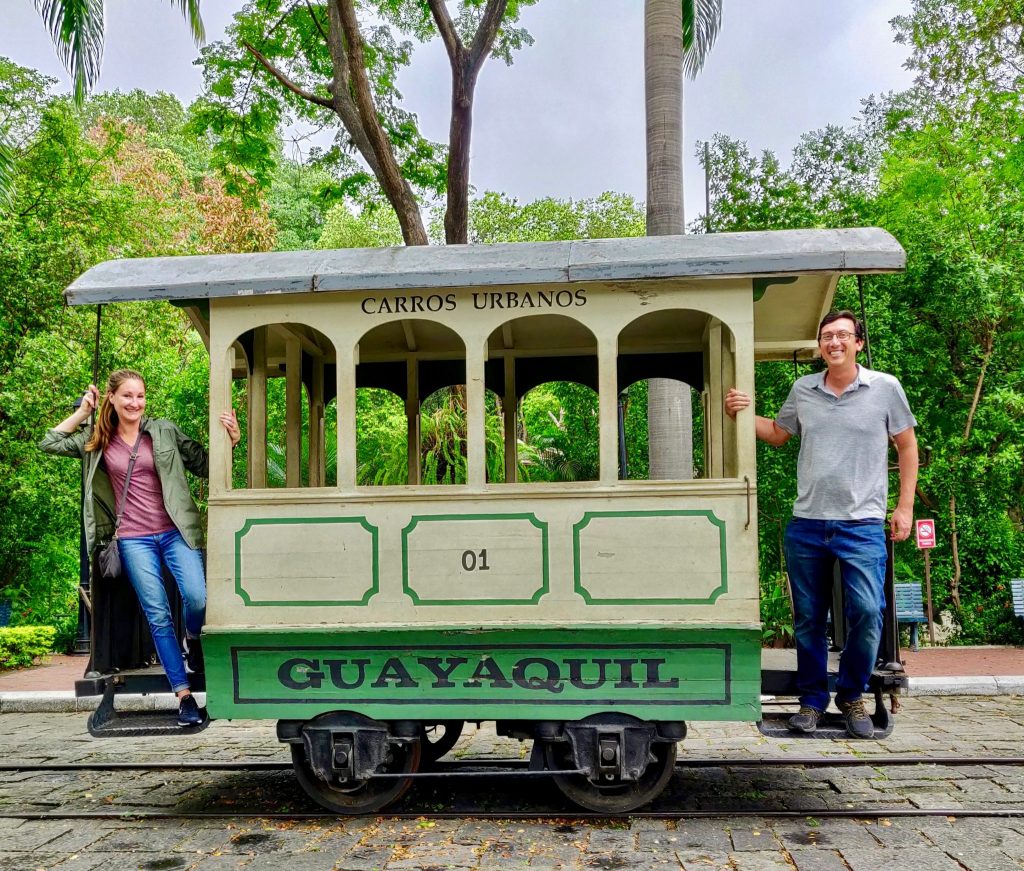
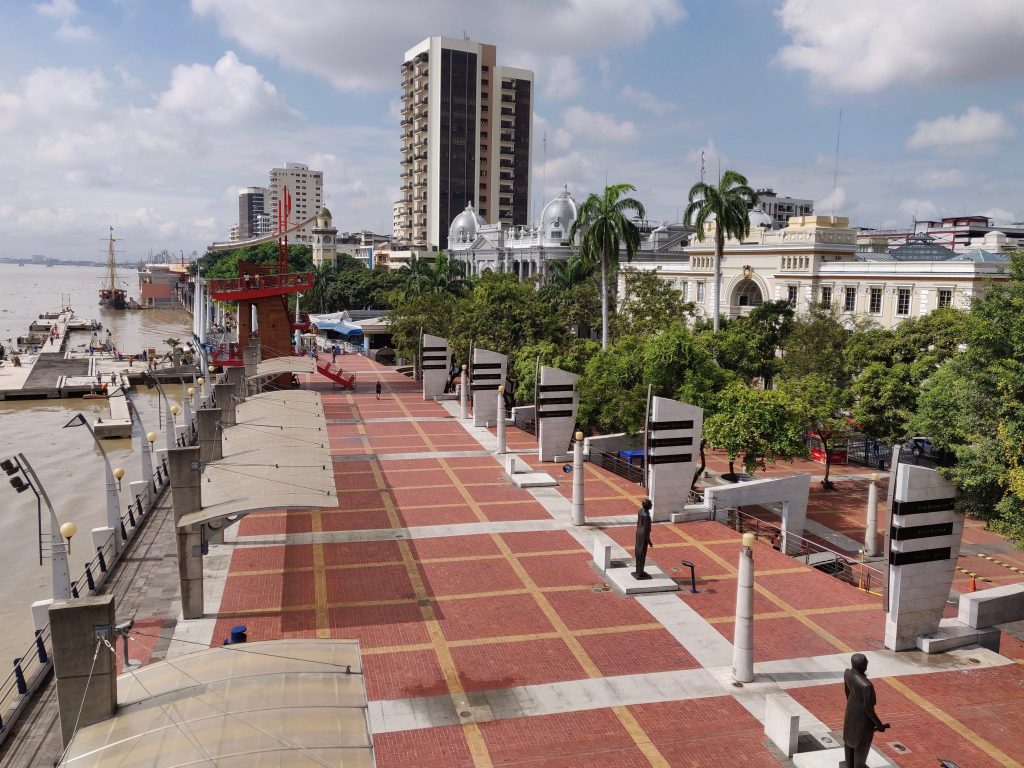
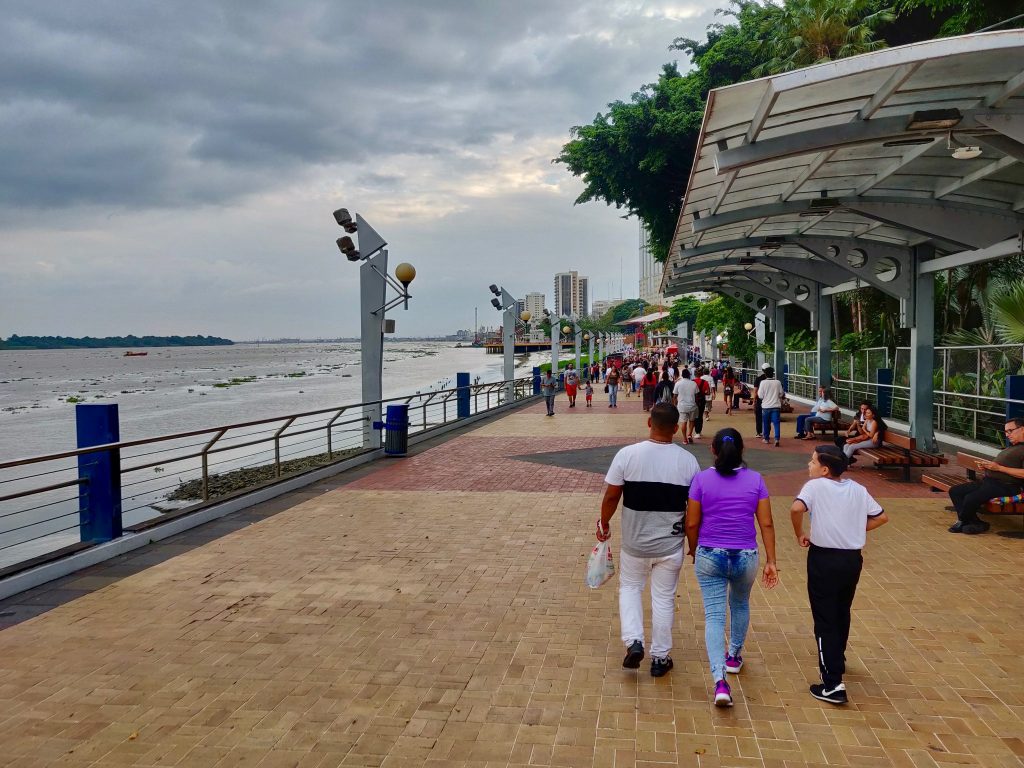
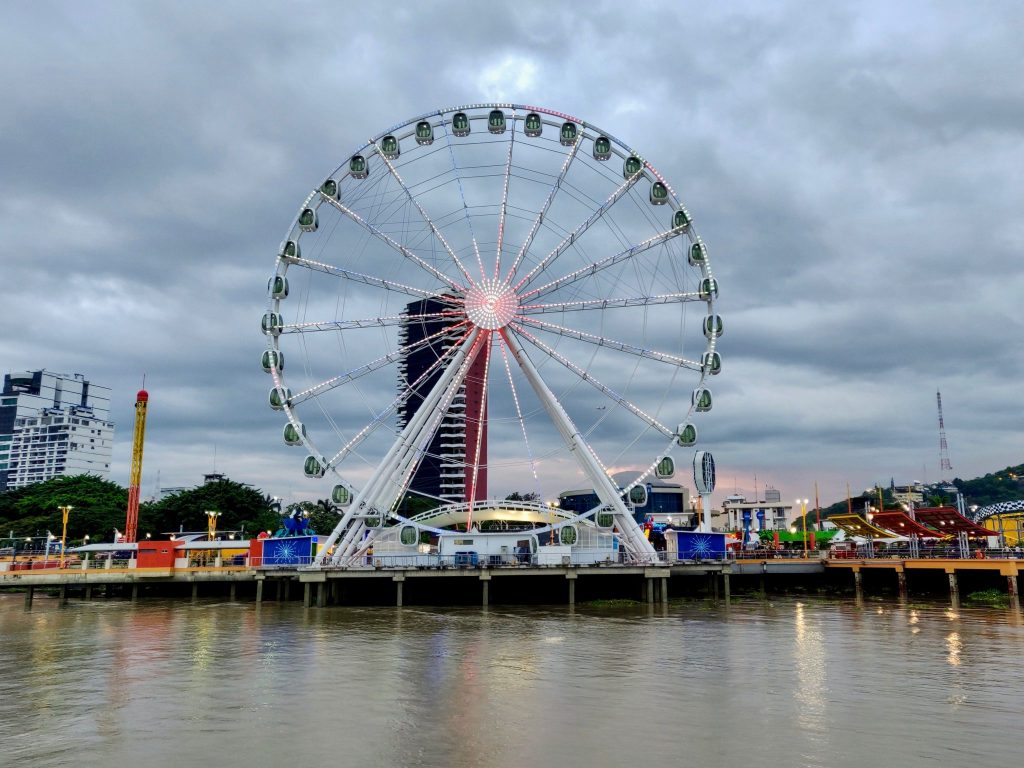
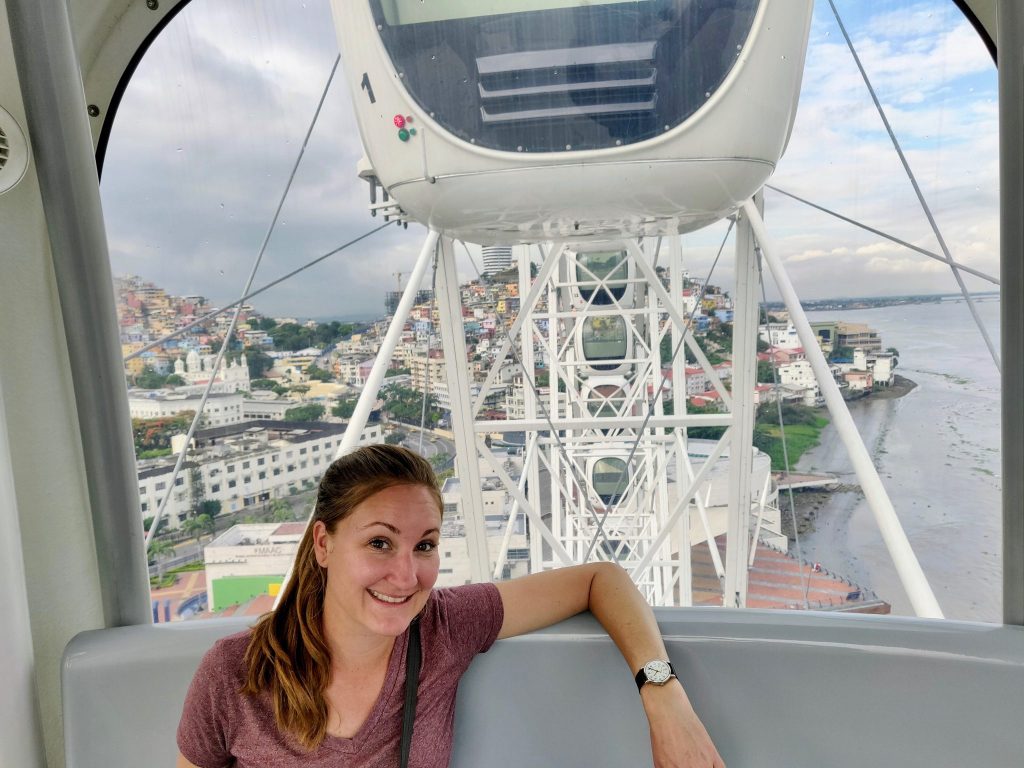
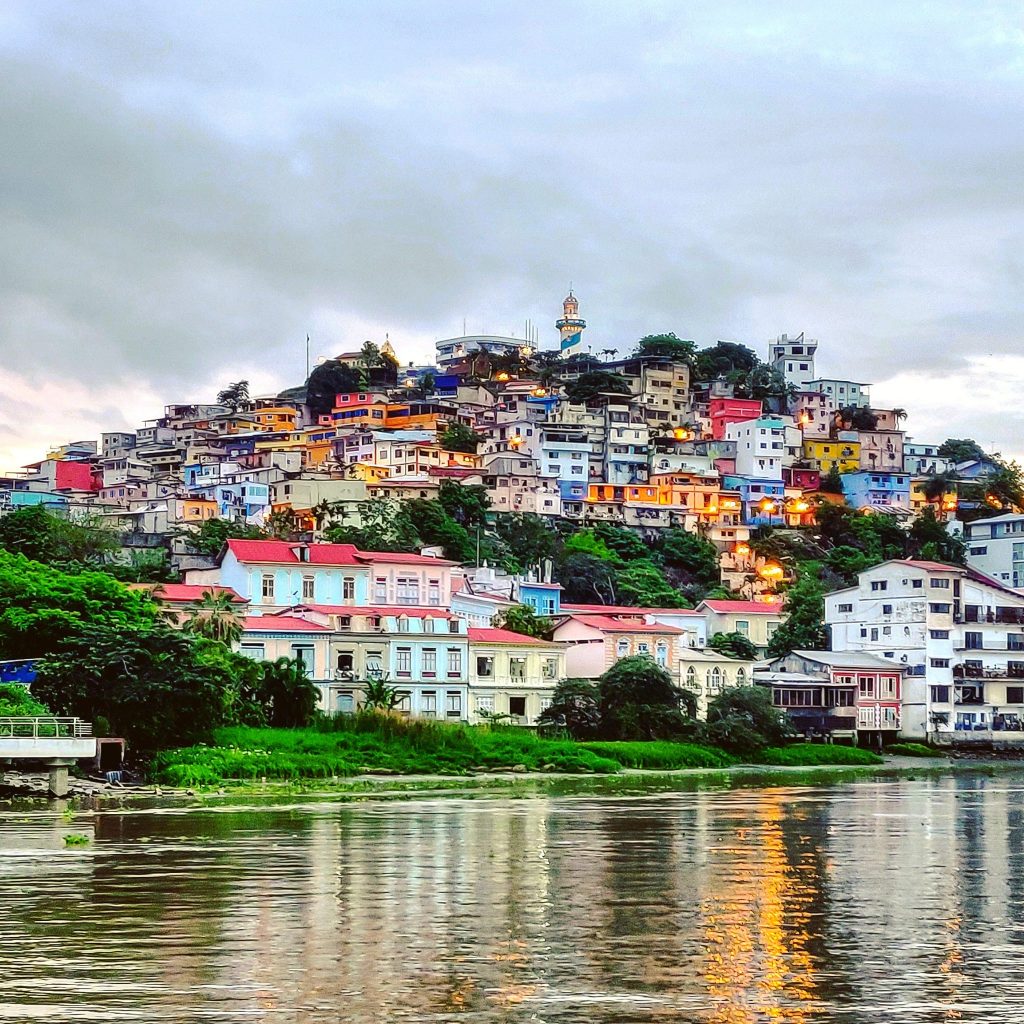
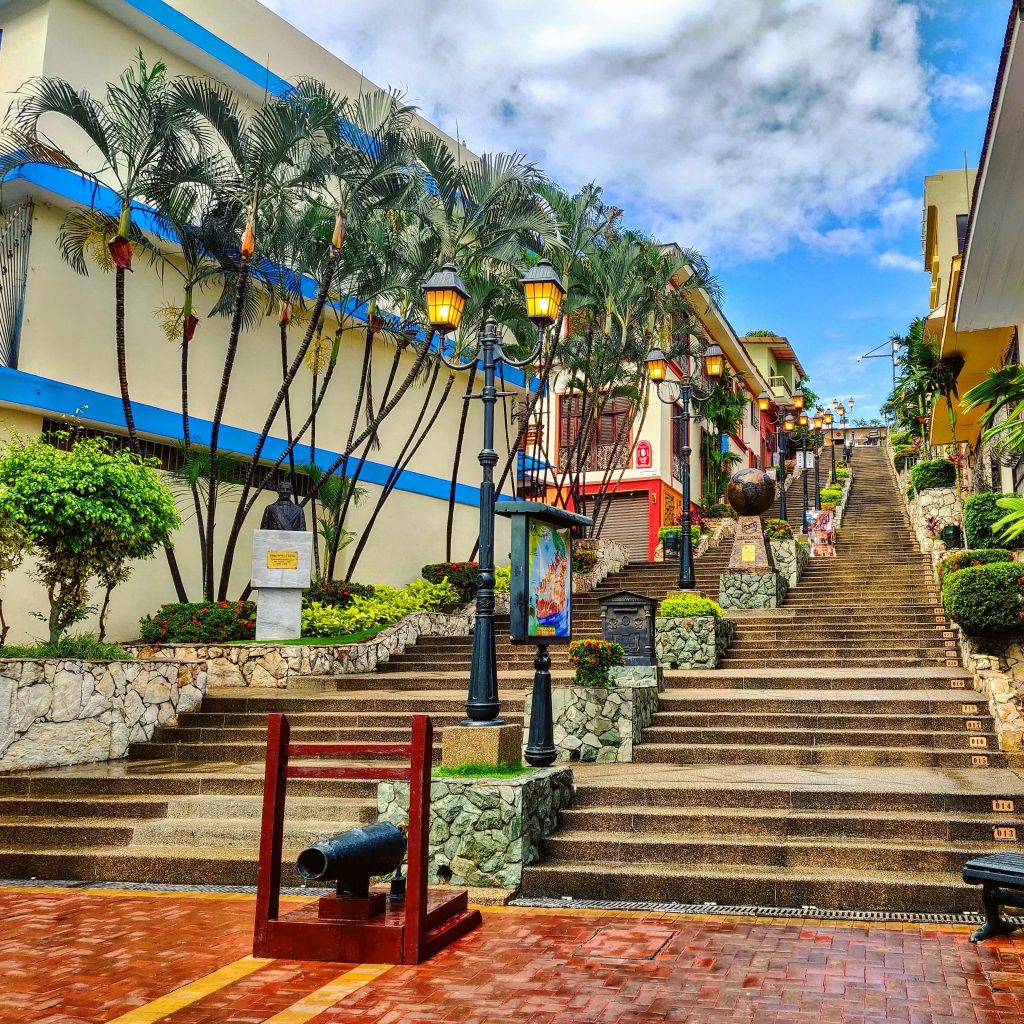

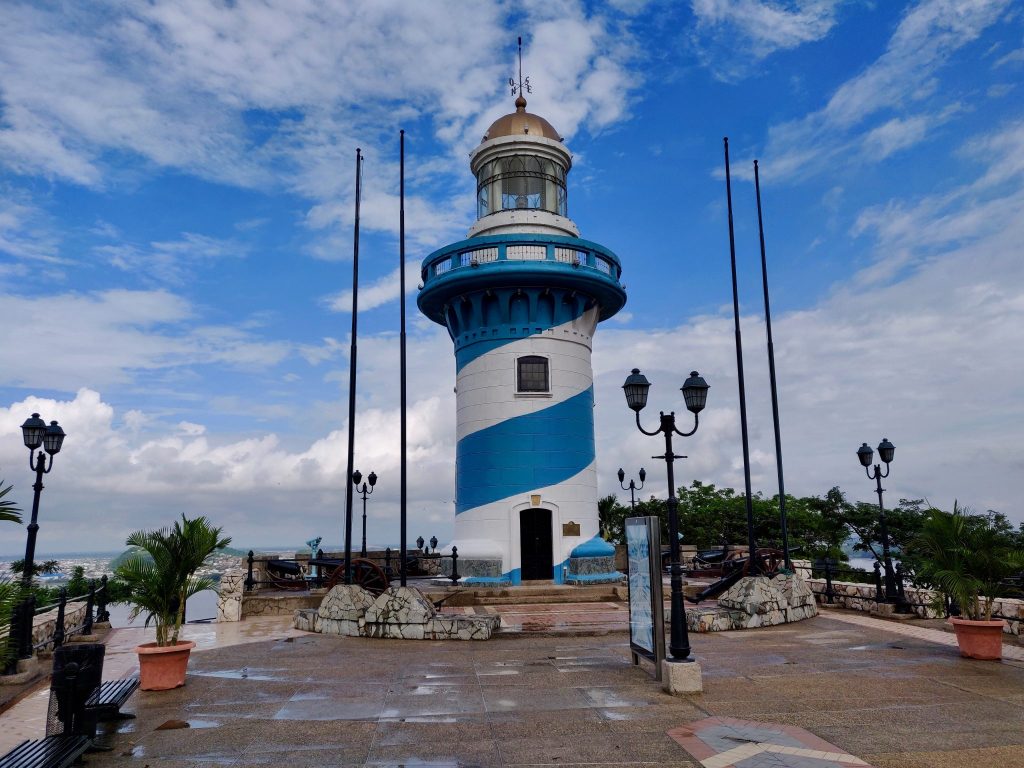
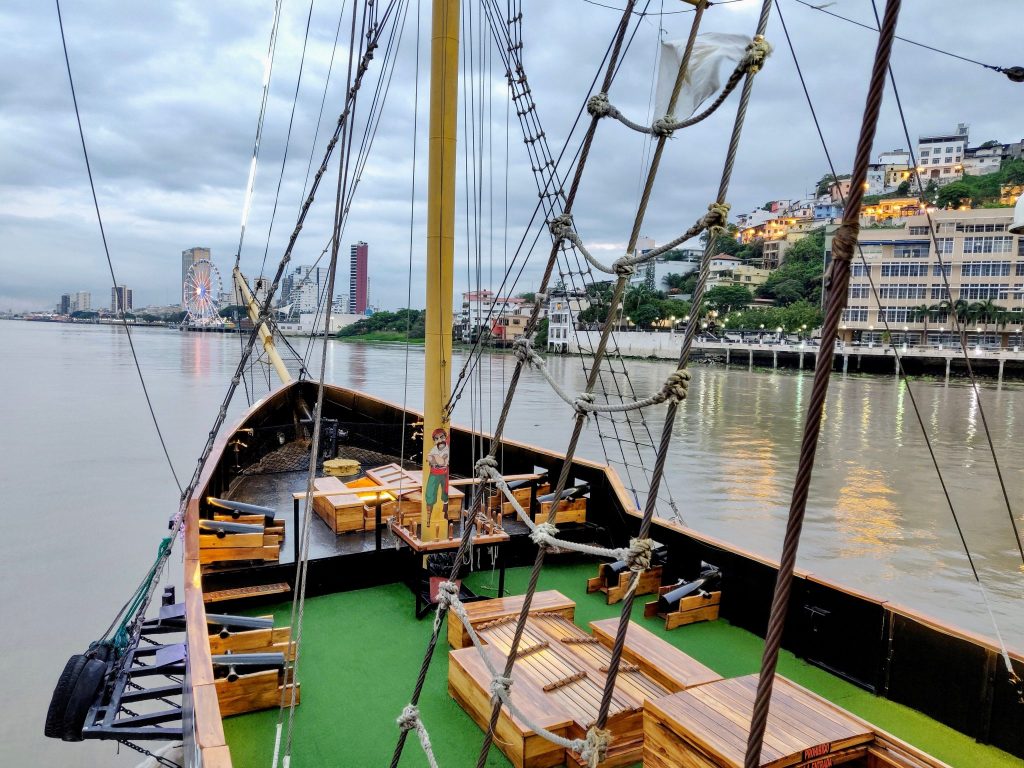
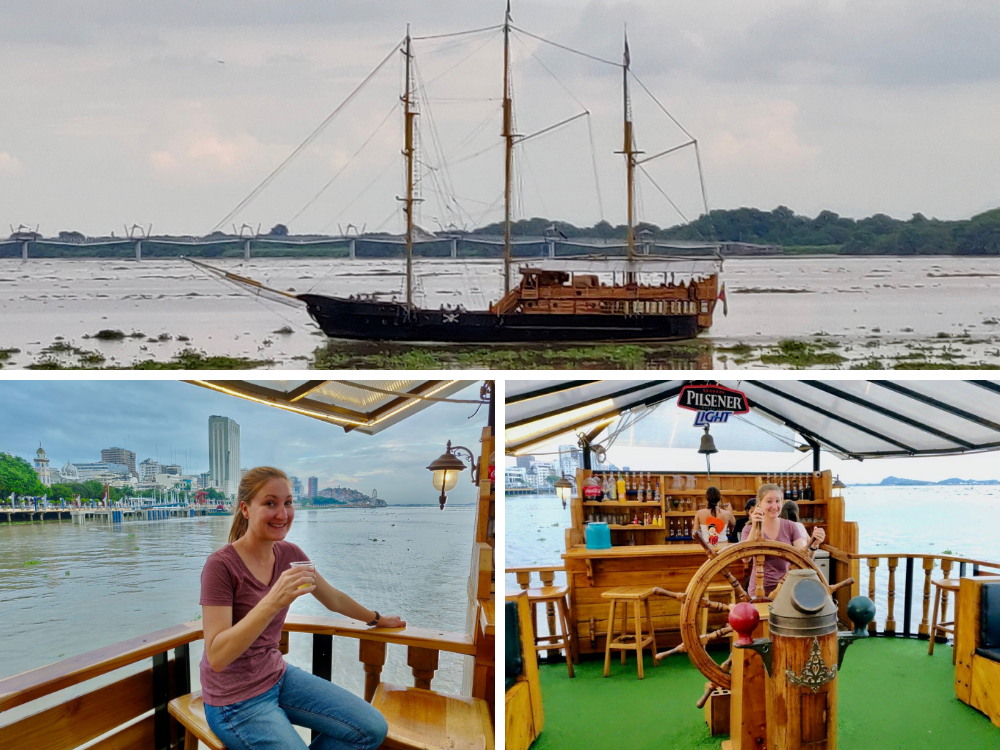
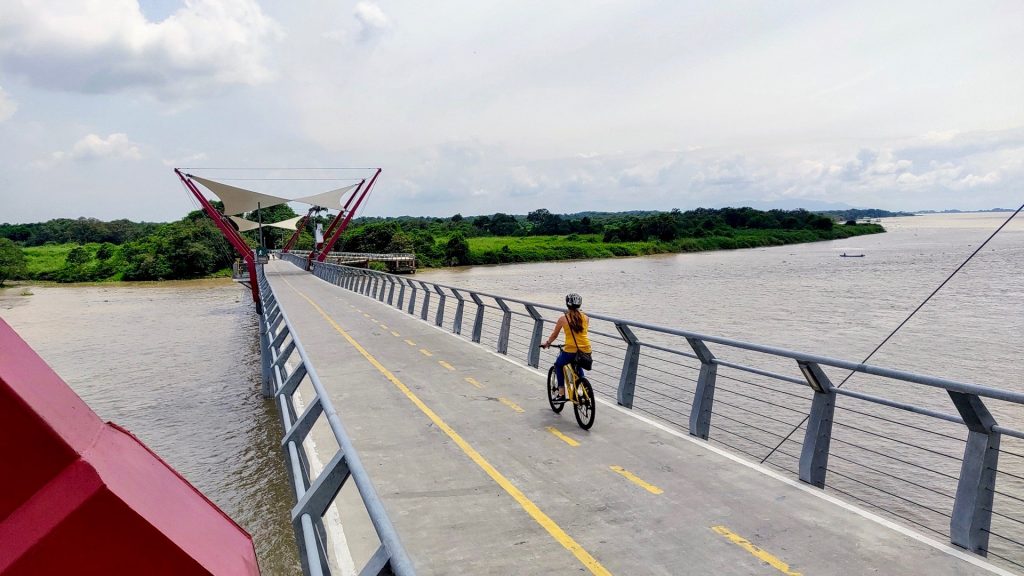
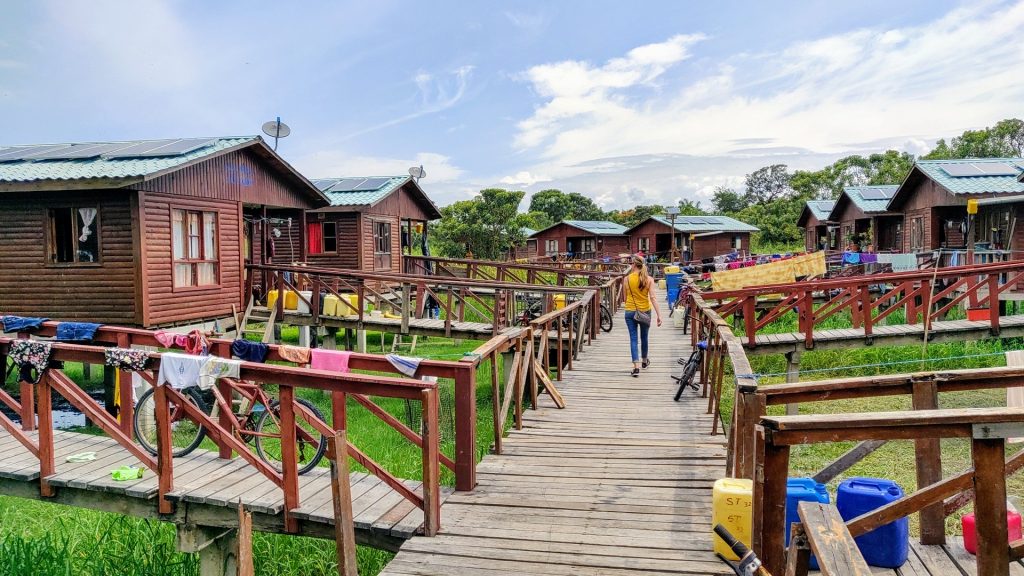
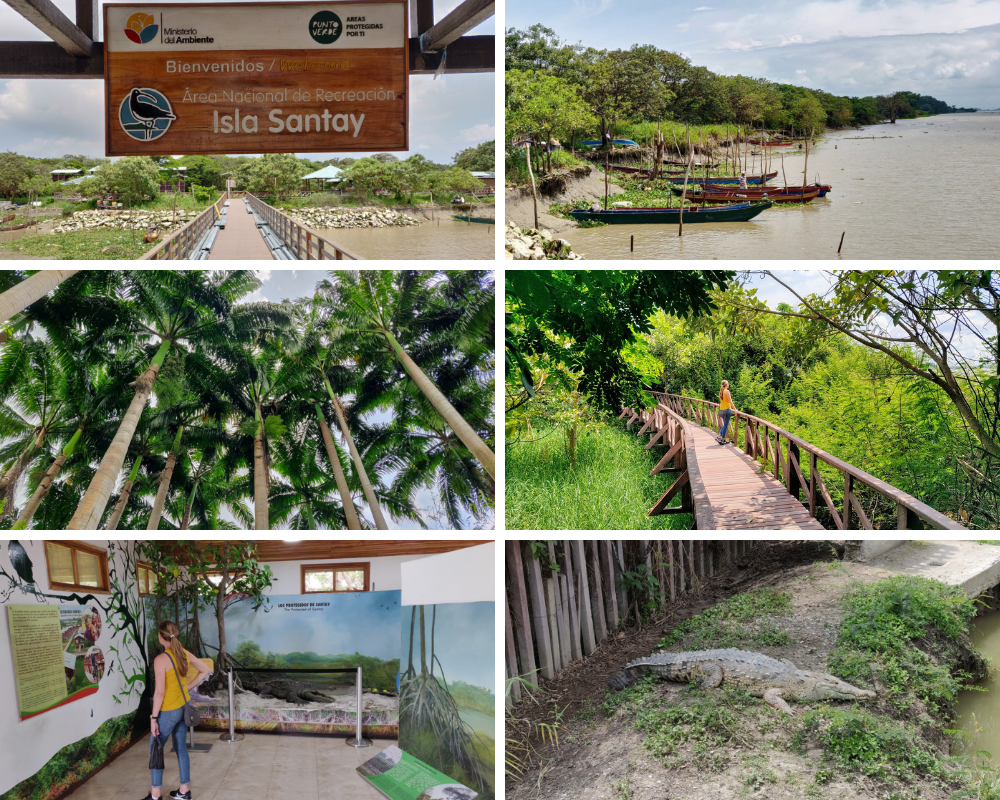


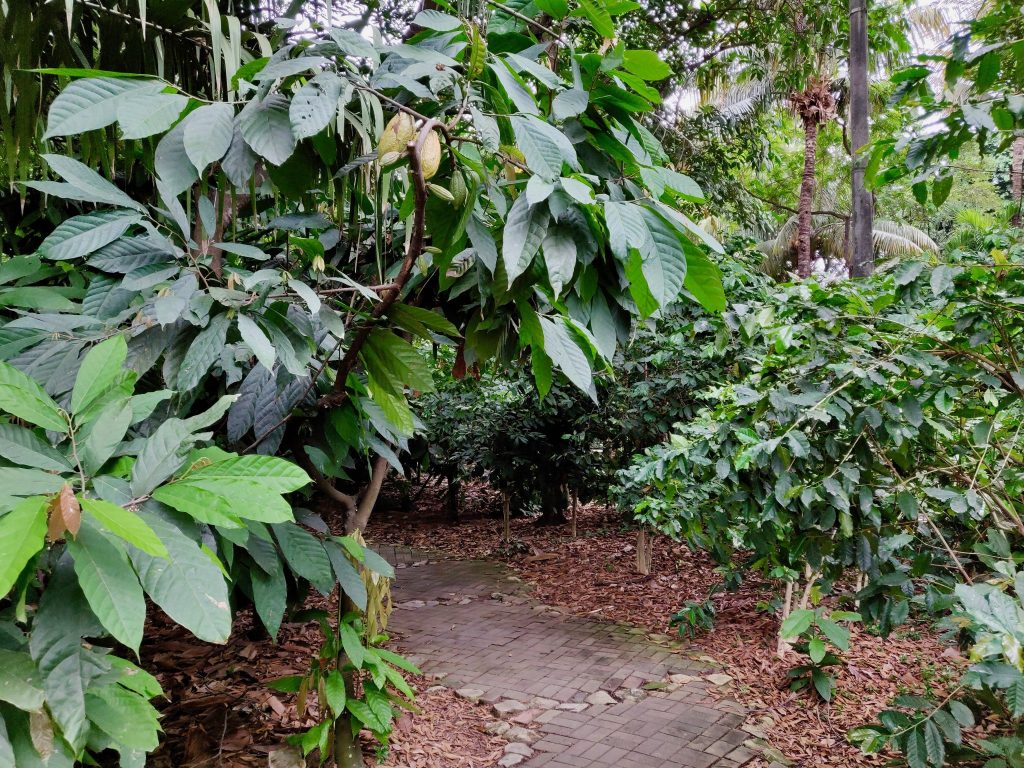
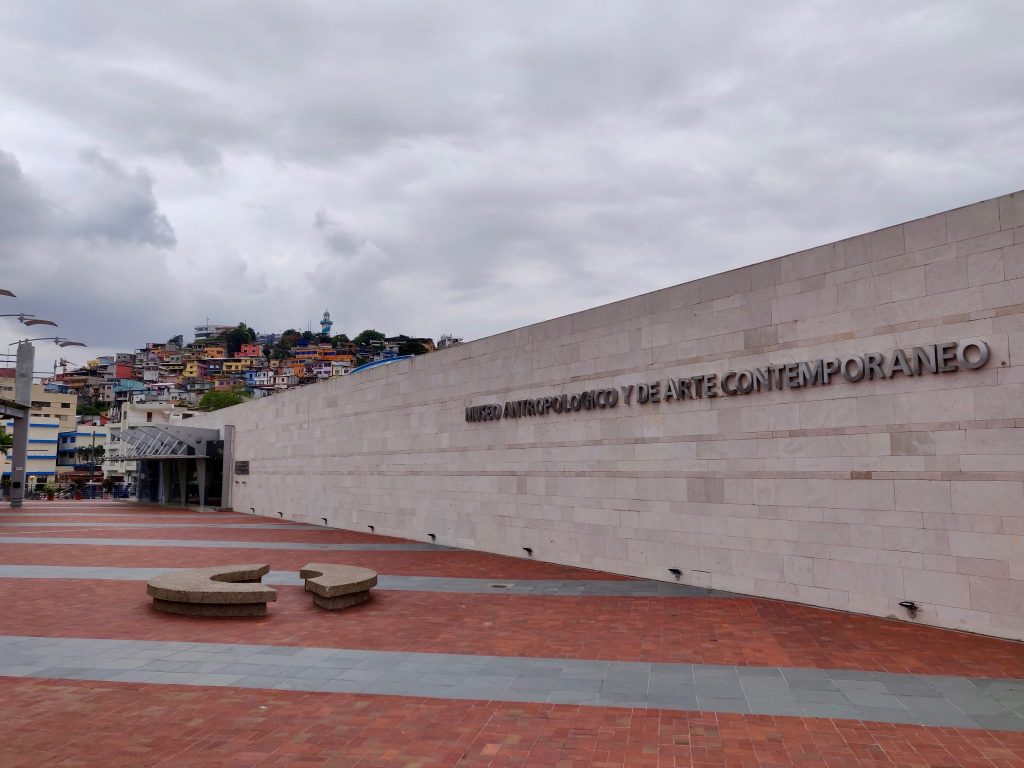
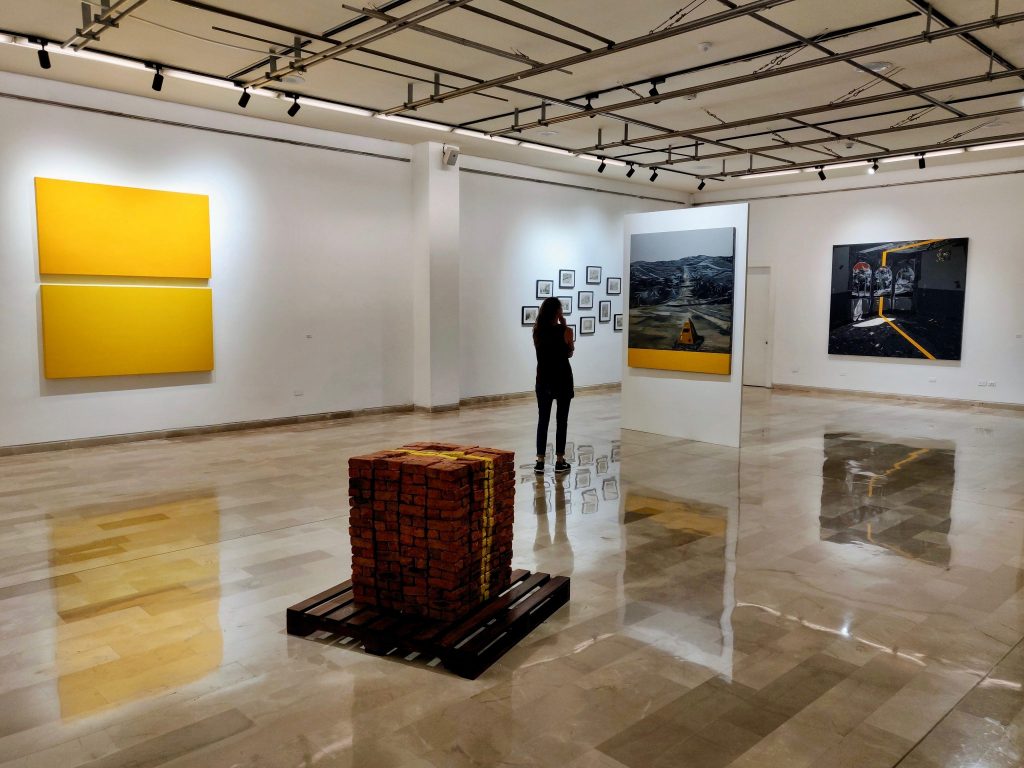
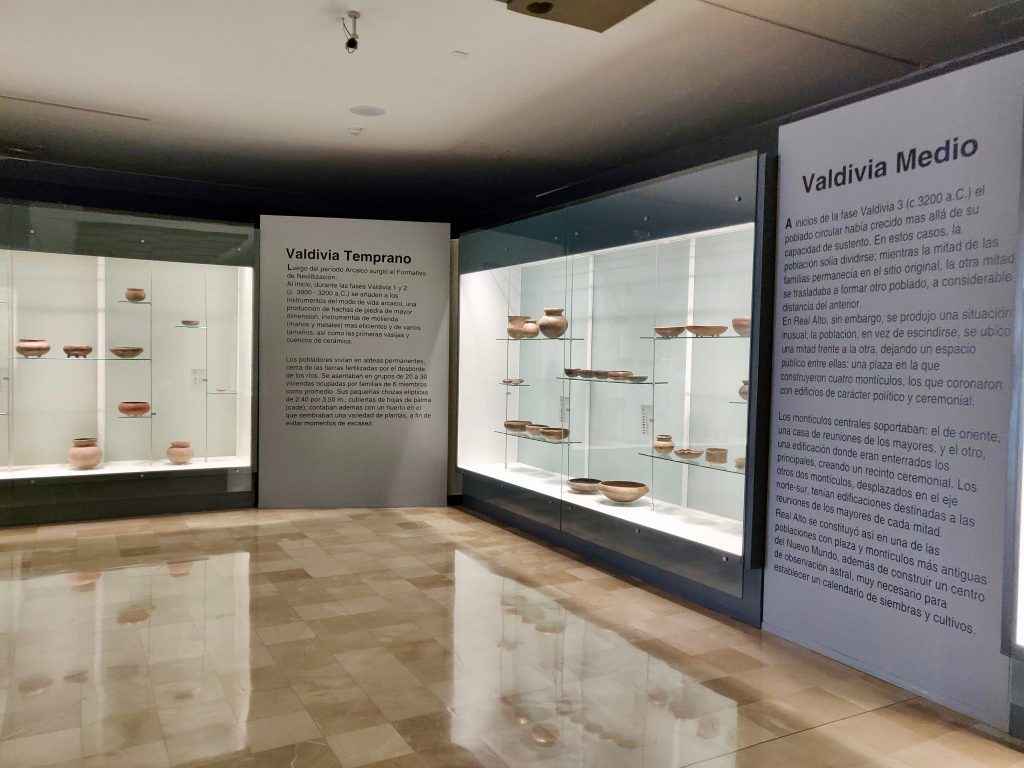
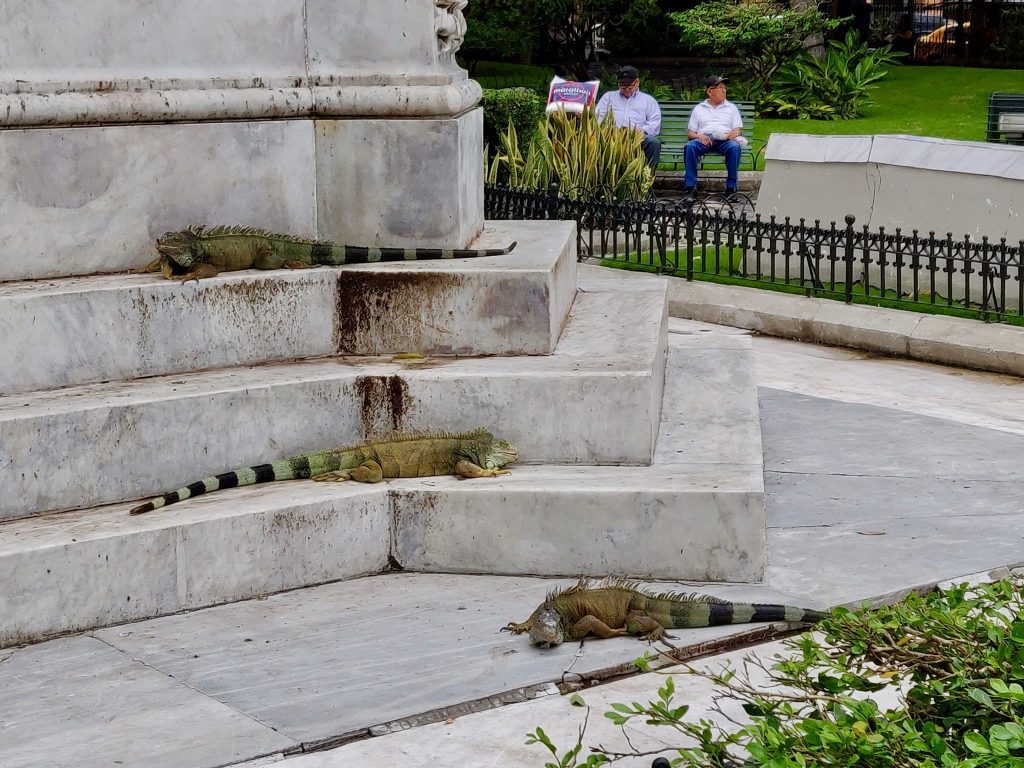
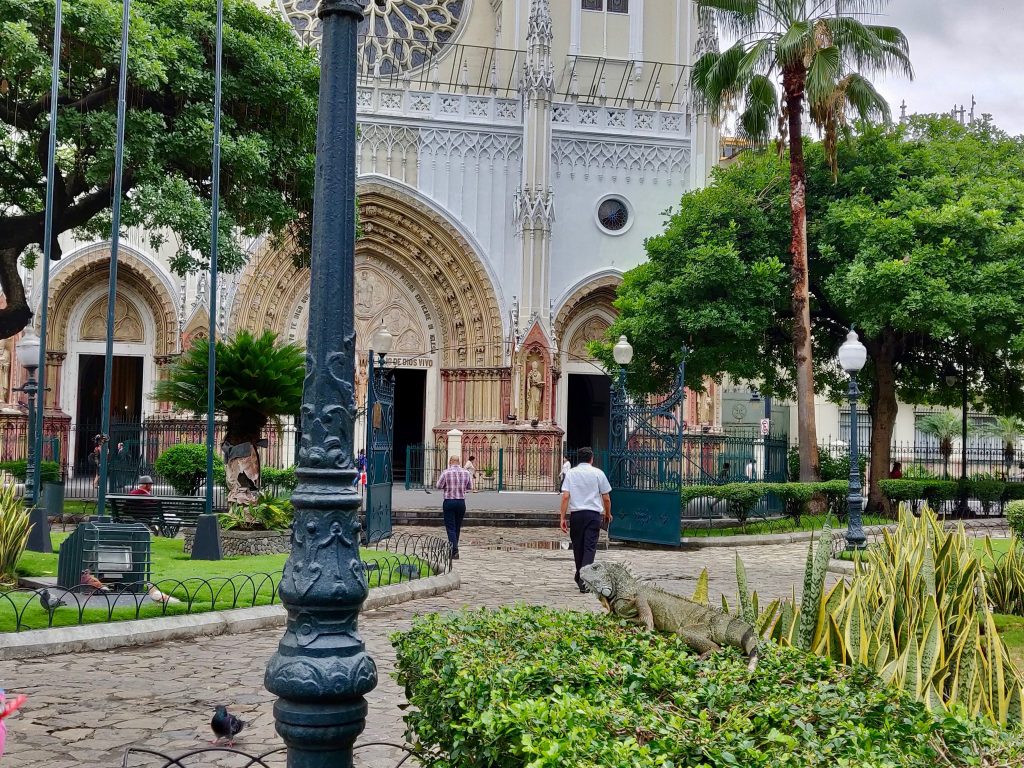
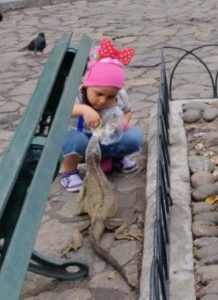
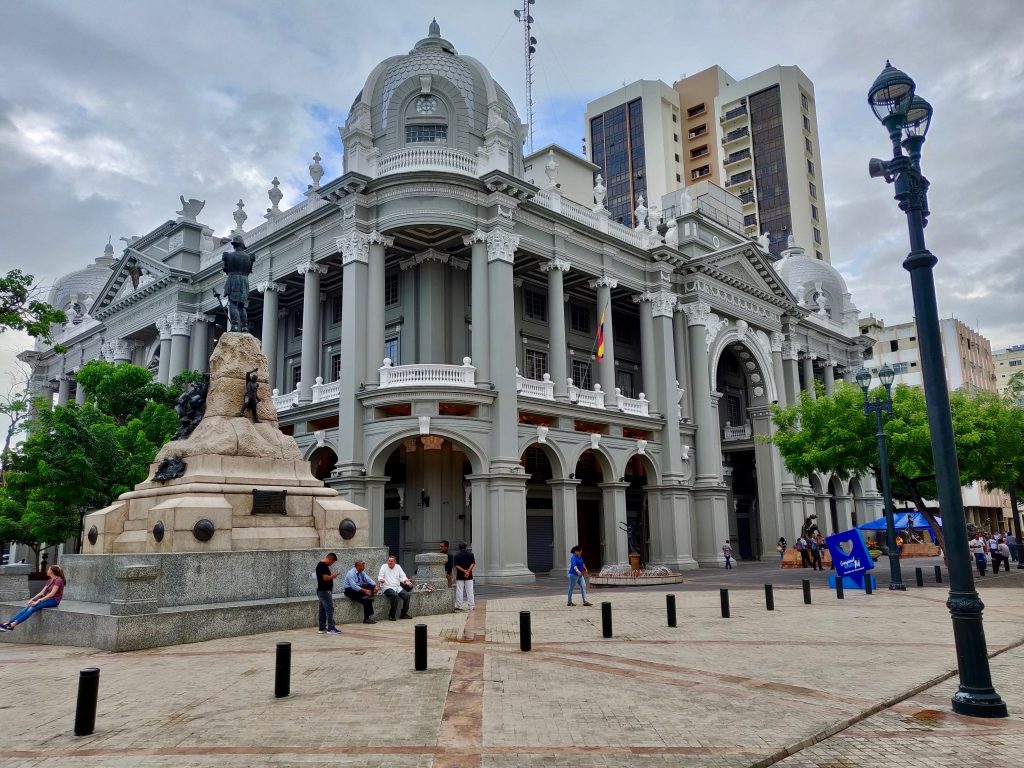
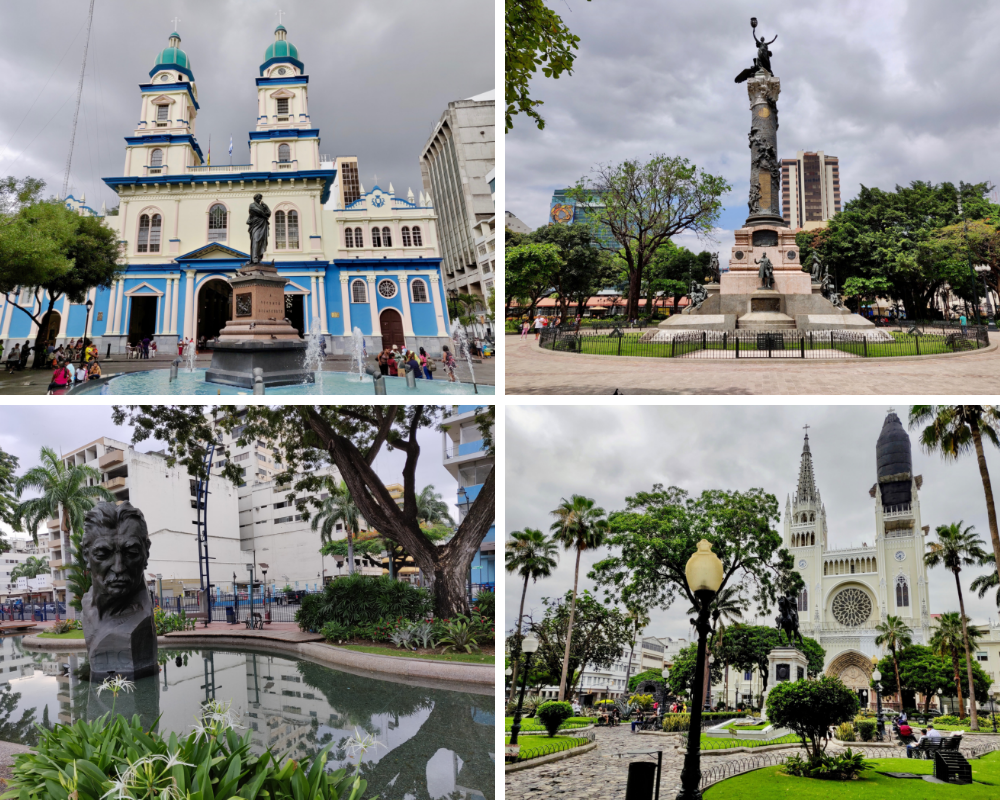
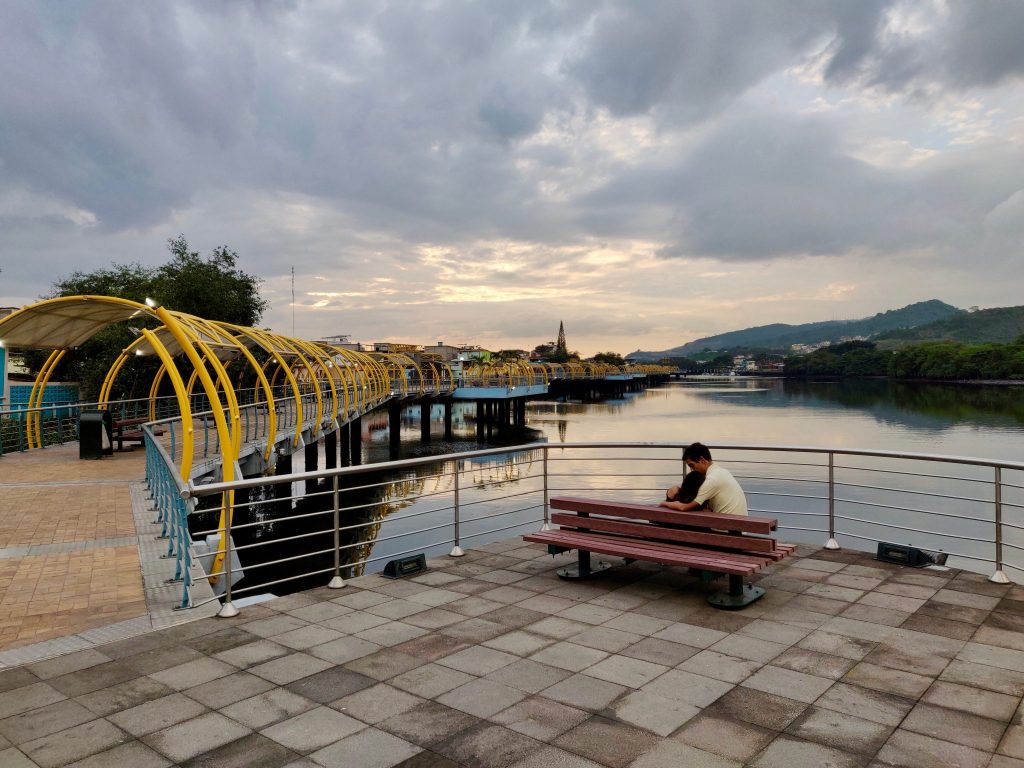
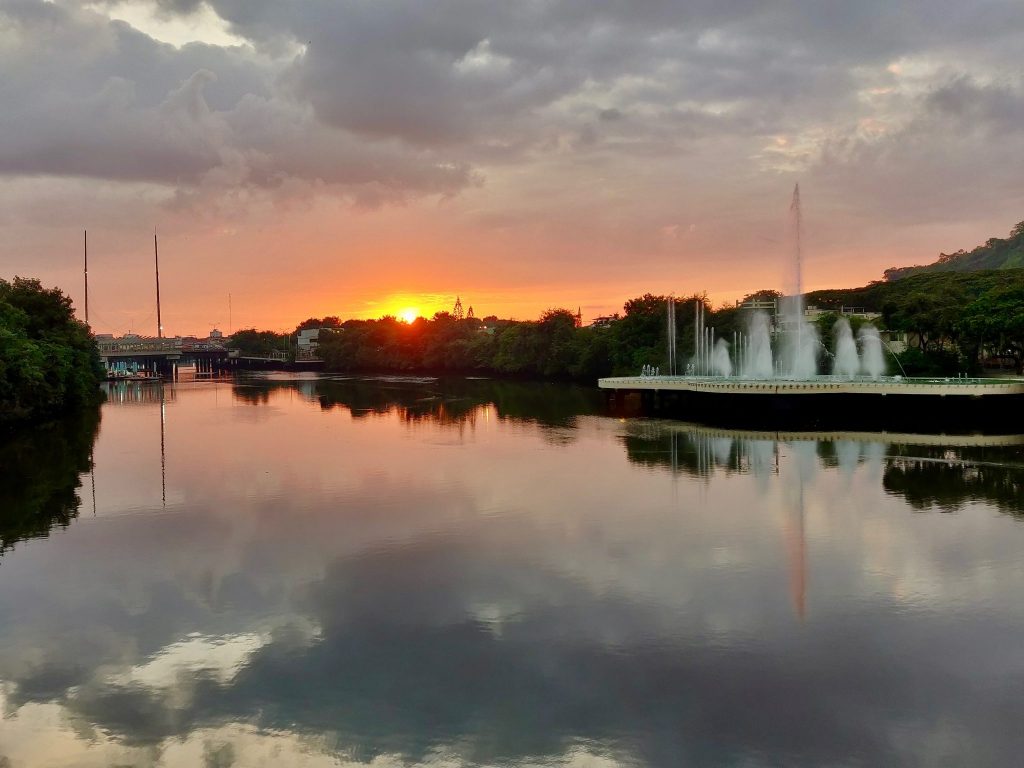
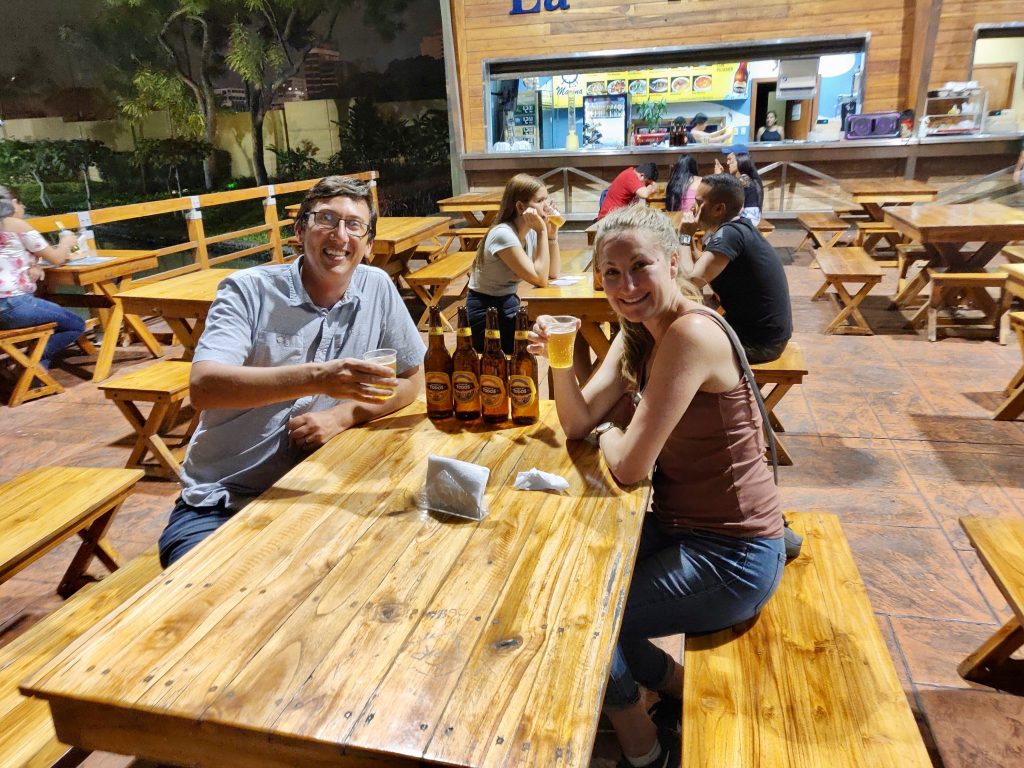
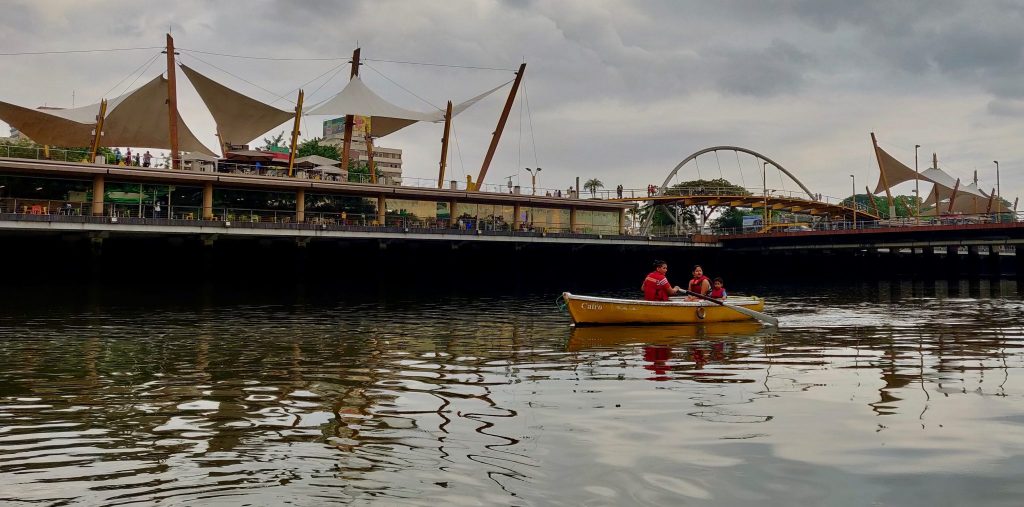
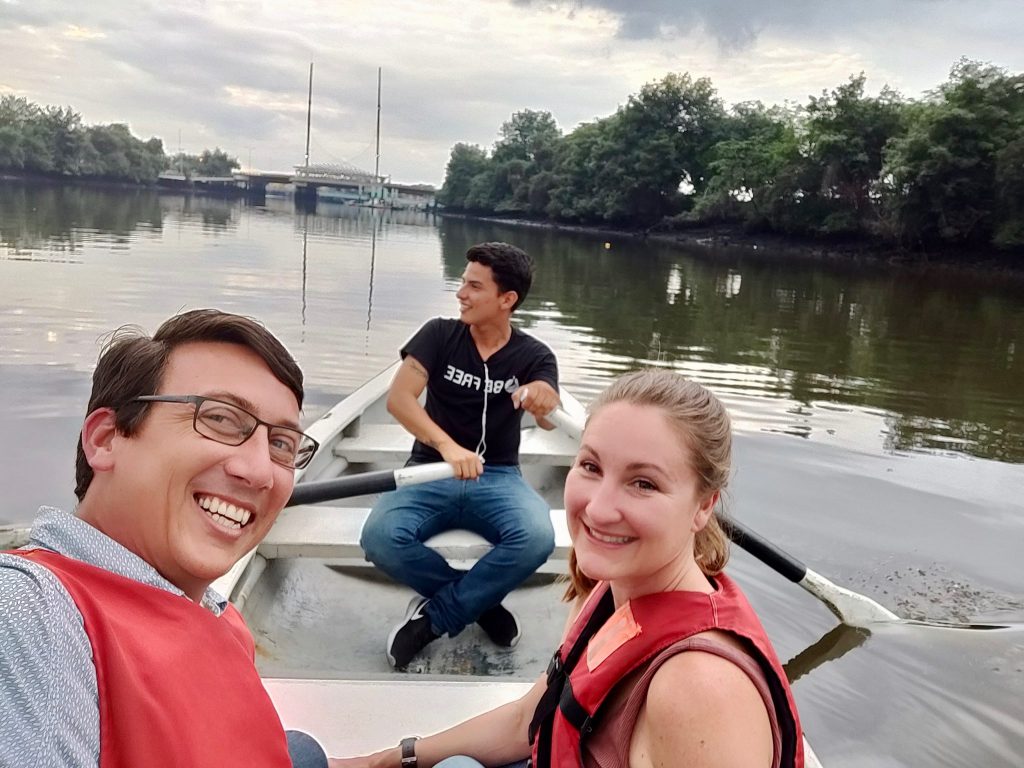
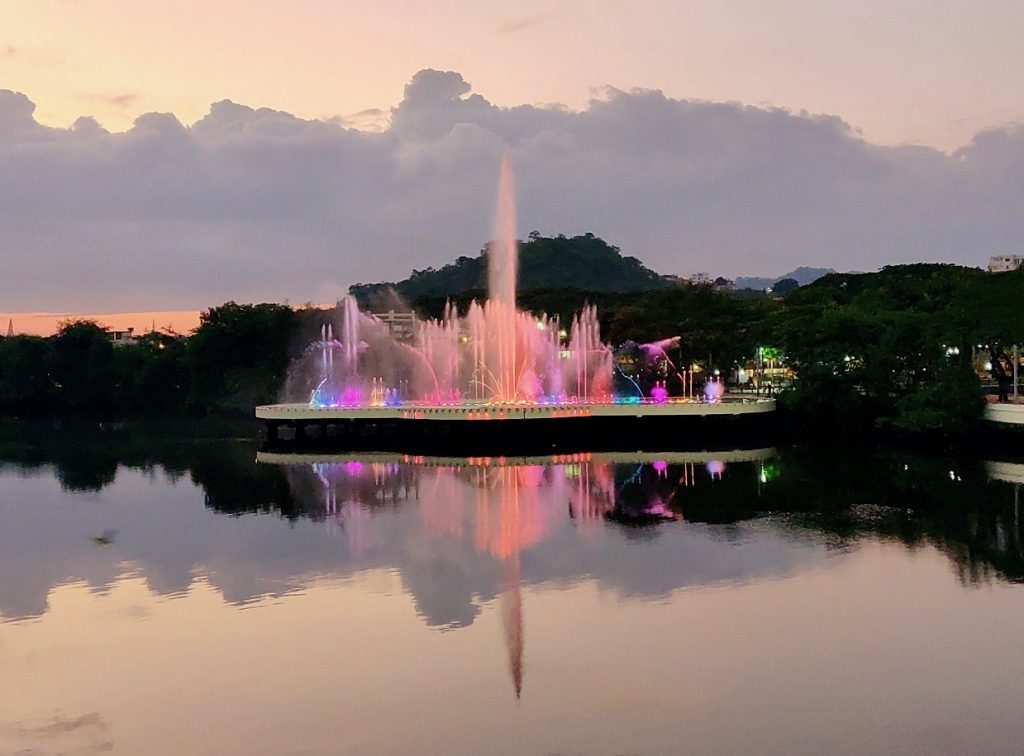
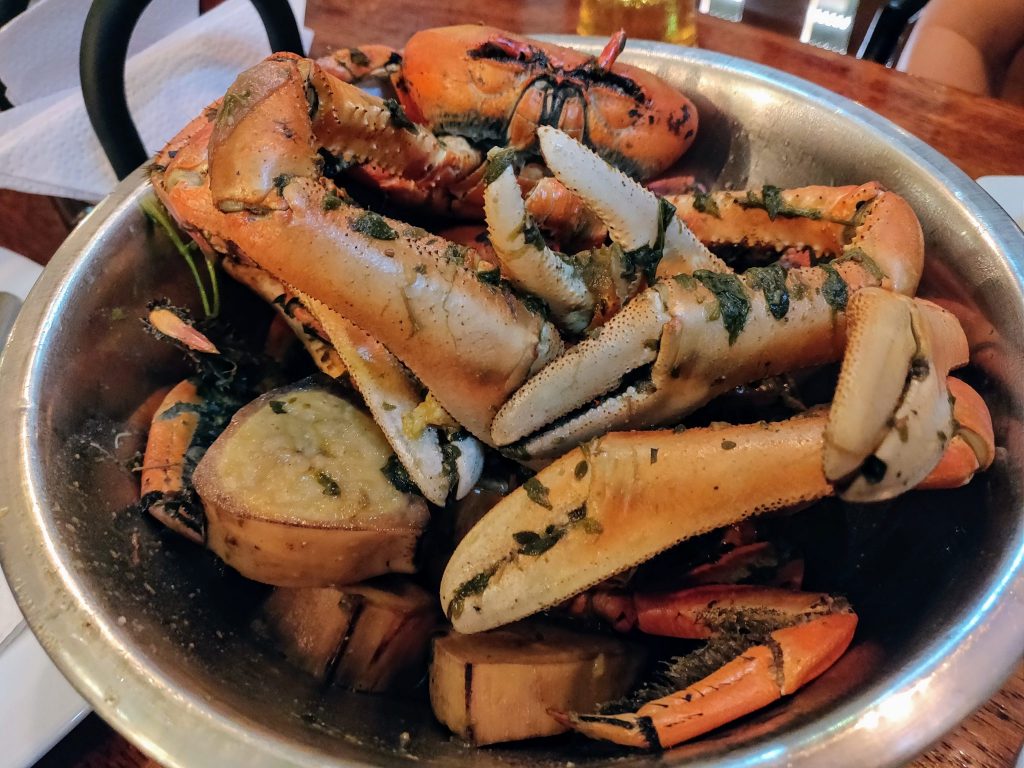
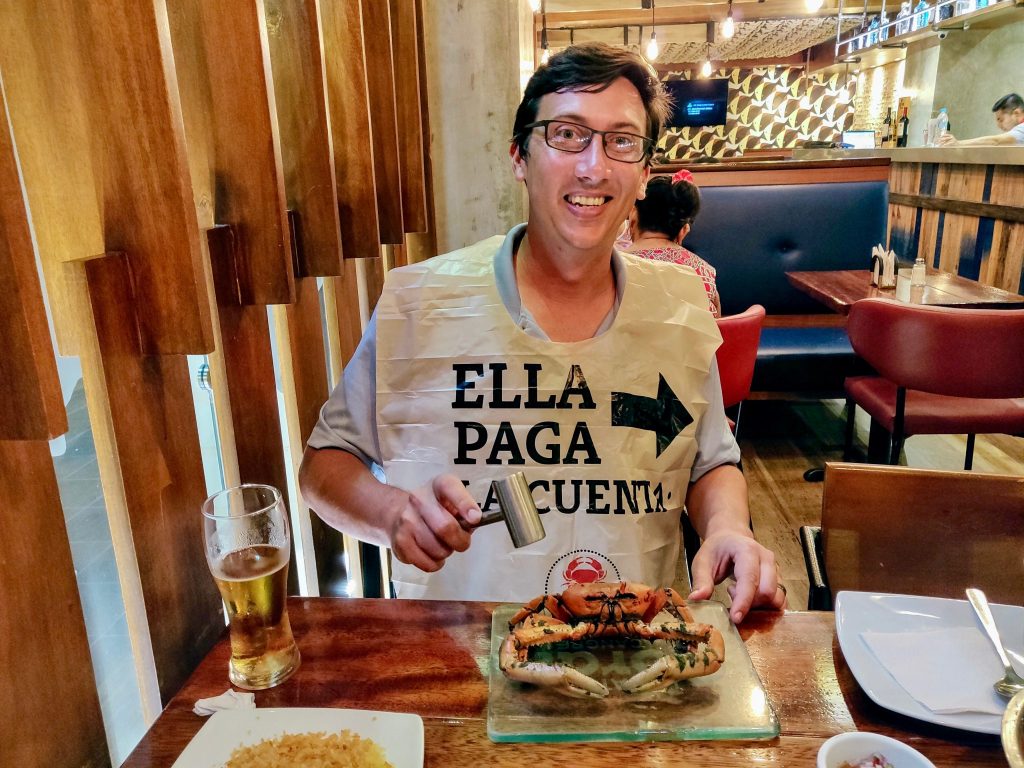
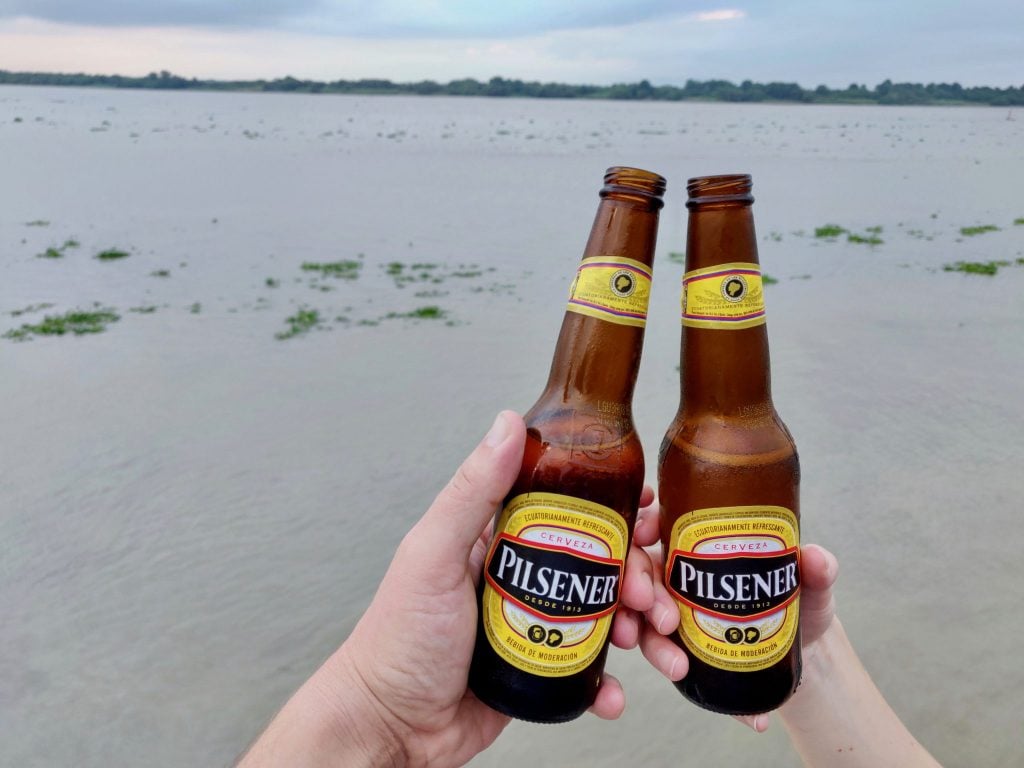
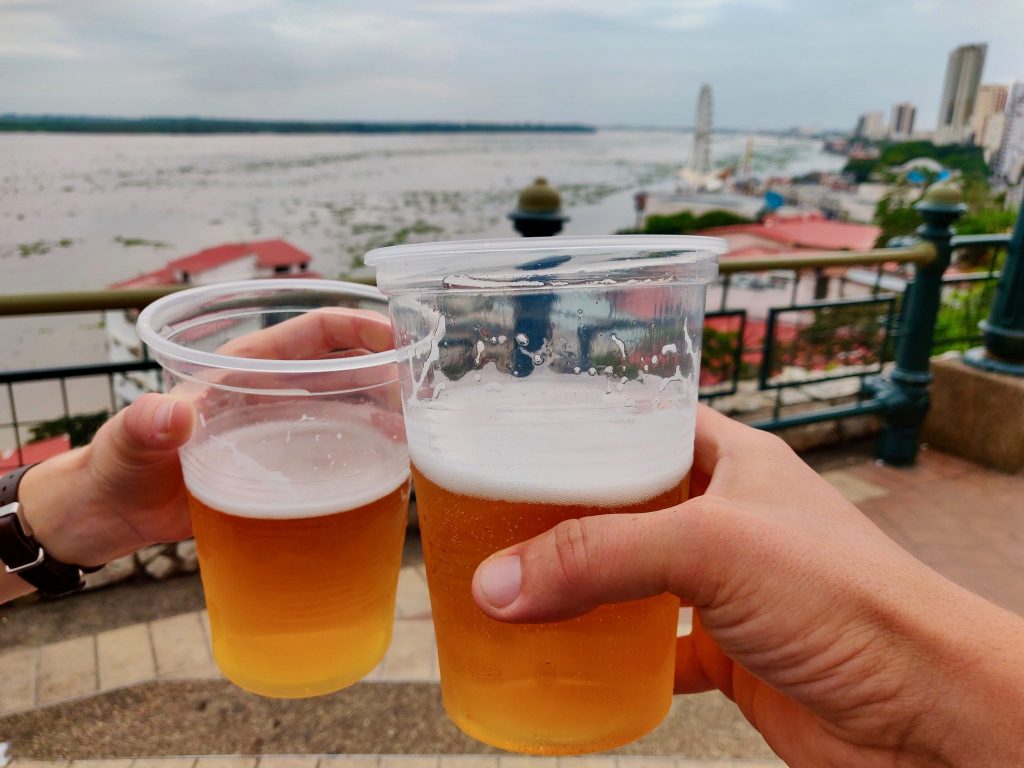
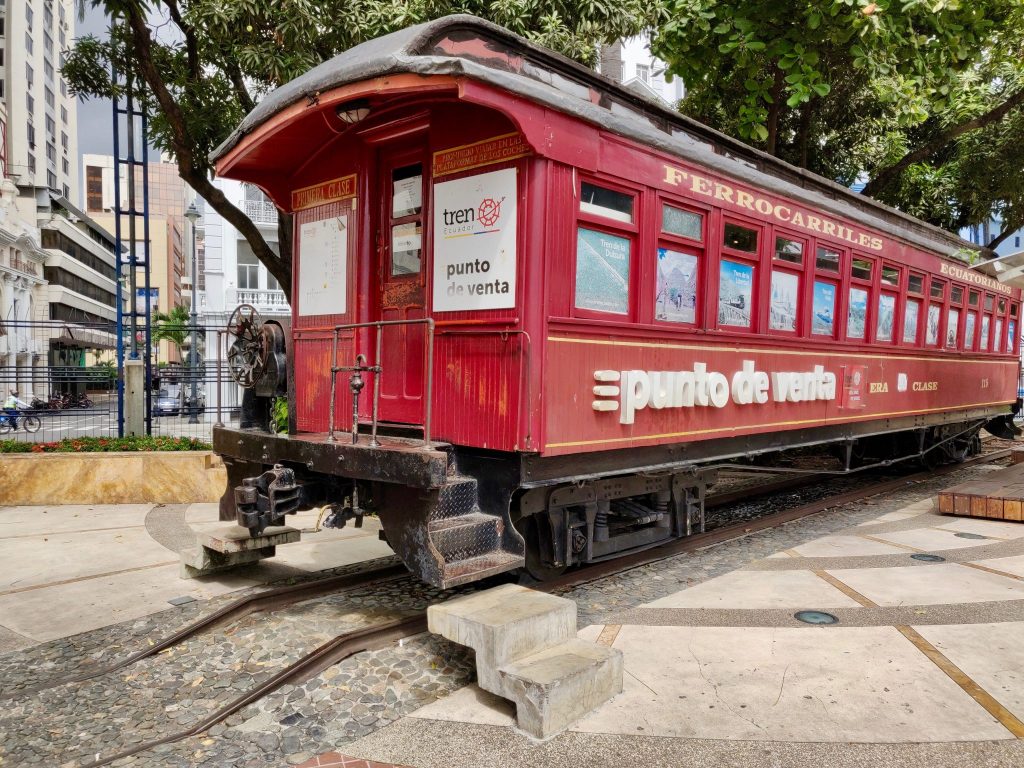
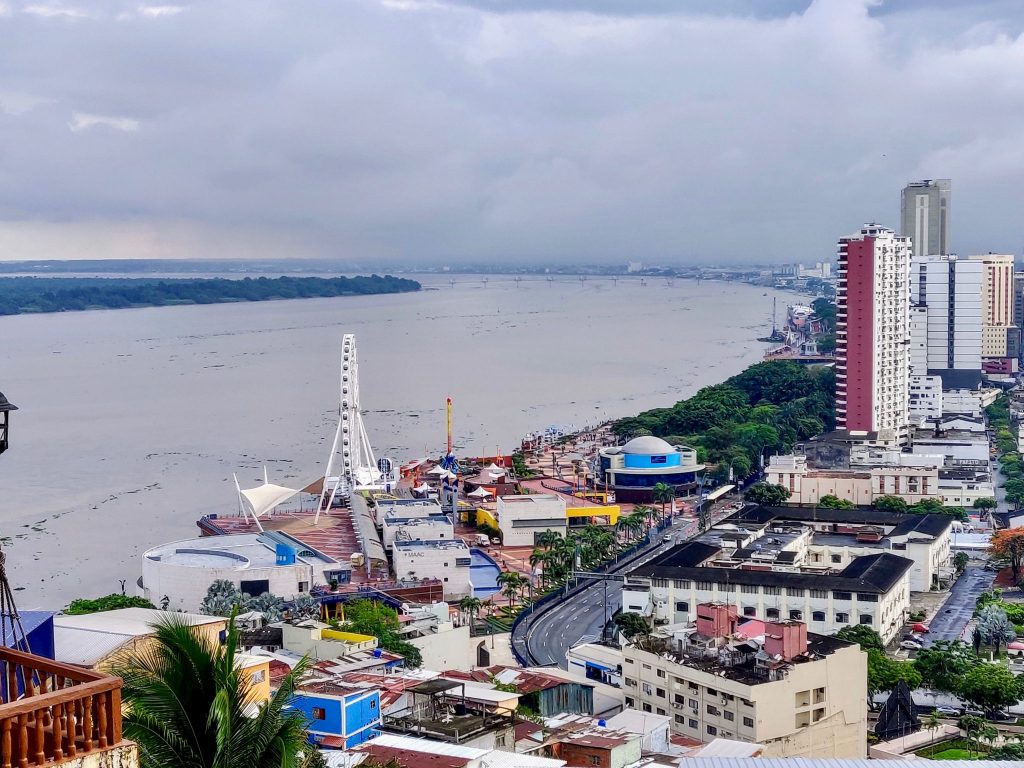
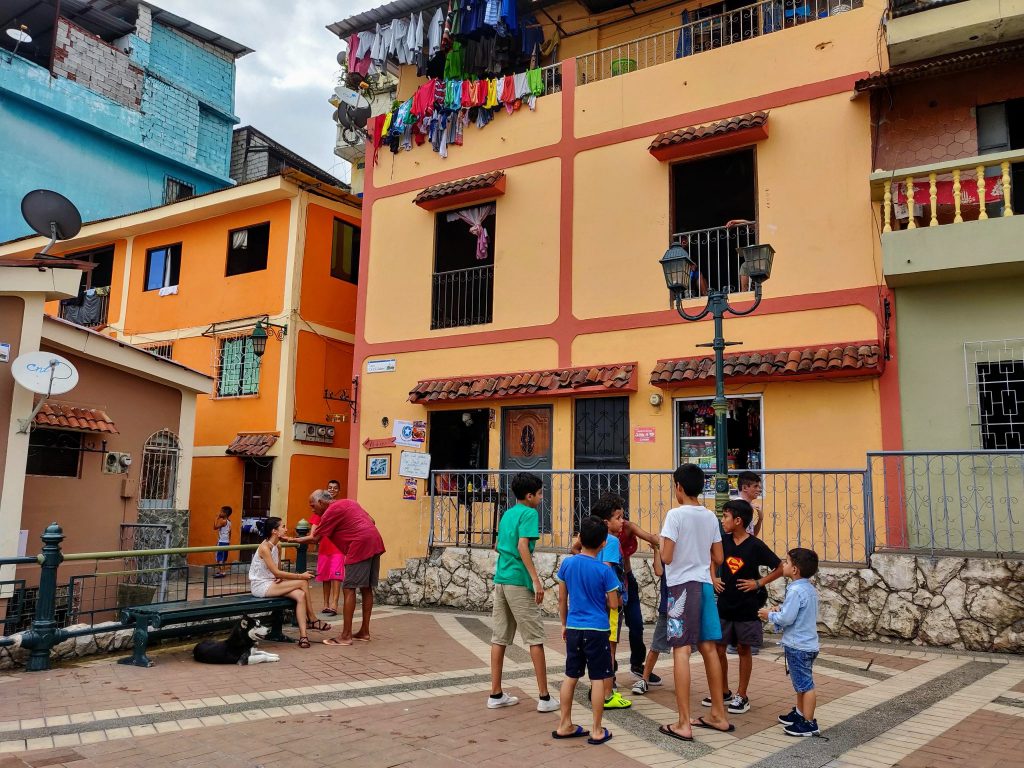
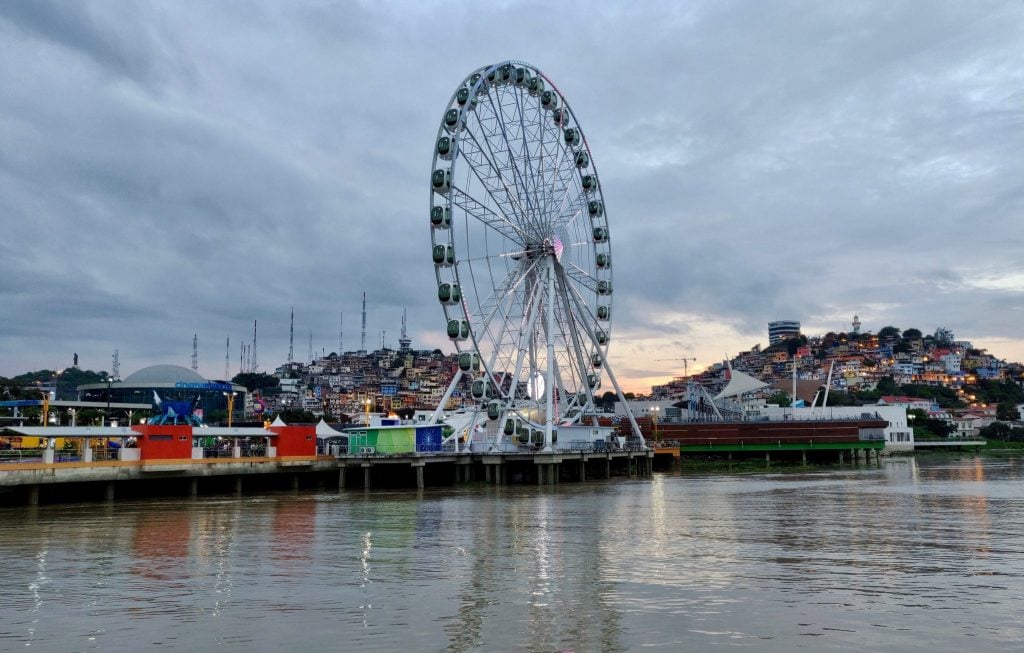
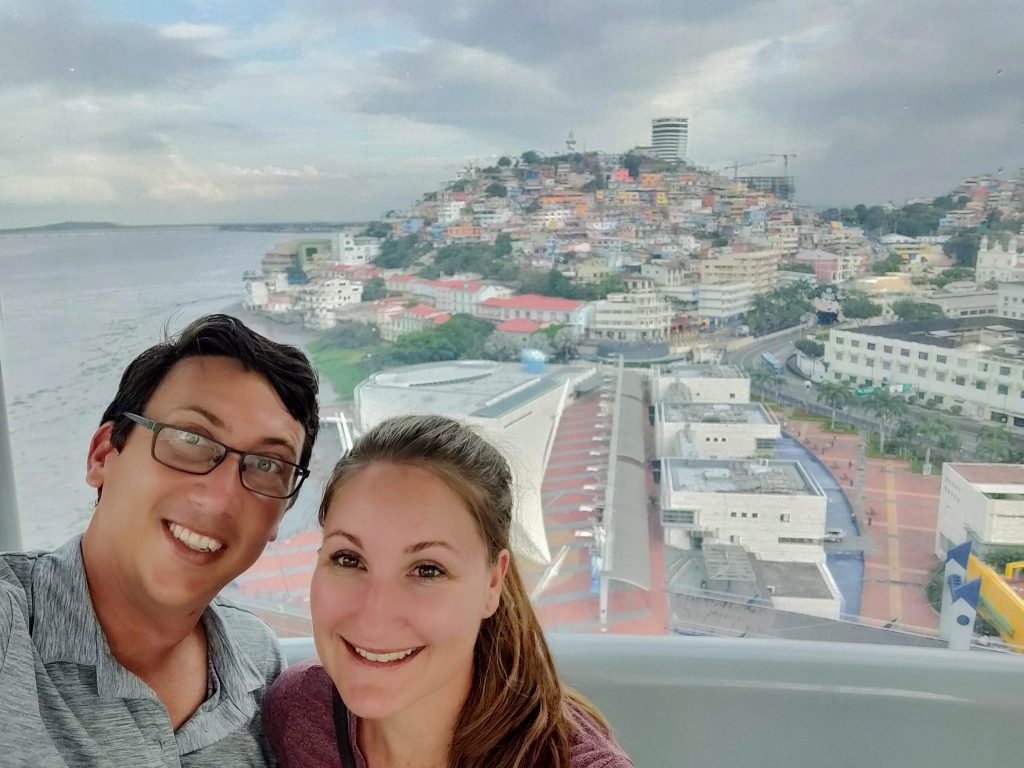
Great list! I especially loved your tips on visiting Malecón 2000 and exploring Las Peñas. Guayaquil has such a vibrant culture and the views from the top of Cerro Blanco are breathtaking. Can’t wait to try the local food recommendations as well!
I loved this guide! Guayaquil has such a vibrant mix of culture and adventure. The recommendations for exploring Las Peñas and the Malecón were spot on. Can’t wait to try the local seafood dishes you mentioned!
Ciao guys! I jumped off a yacht in Galapagos and was only going to transfer through Guayaquil then read your amazing post!!! Thanks an absolute million. Guayaquil is fantastic….I’m in a hostel overlooking the mighty Rio Guayas and Los Penas, the lighthouse and Santa Ana all just incredible and super quiet on a Sunday. Tourism hasn’t bitten here yet but it should!!! Extraordinary place….so thanks so much for inspiring me to stay!!!
Quite glad I stumbled upon your post. I love planning trips and reading your commentary on some of the things we’ve planned (and some that we hadn’t yet added) is reassuring. We’re heading to Guayaquil for a six day city-break in Feburary and then on to Montanita for a while. Really looking forward to checking out all that the city has to offer.
Thanks for this very informative and helpful guide. As a solo female traveler, I never felt unsafe in Guayaquil, and I used the local buses at night. One thing you may need to update though, is that Parque Historico is no longer free – it cost me $4 to get in. I was a bit disappointed, given the entry fee and the cost to get there and back by taxi.
Thank you for letting us know. It’s comments such as this that help us to keep these articles up-to-date. I’ve just updated this post to reflect the $4 pricing. The park recently changed hands and is now run by the municipality of Samborondón, which began charging admission in July 2022.
Gracias
So glad I stumbled on this! Planning a trip in March 2020 to Ecuador and this is the perfect resource! Well laid out and informative! Thanks so much!
My daughter is planning on going to azoques in December to meet her boyfriend and his family. She will be traveling alone and they will pick her up from the airport travel around and all fly home together. Do you think the airport is safe for a 19 year old girl?
Yes, she should be just fine. We’re not aware of any safety issues at the airport. The airport is very secure. It’ll just be good if she has a firm plan in place to meet the people picking her up, so there’s no missed connection.
John,
Once again thanks for your blog. This is really nice and informative. I am planning to be in Guayaquil for 3 days at the end of September and then Salinas. I am planning to stay at the Sheraton hotel which is adjoining to the Mall del Sol. Would you mind telling me which hotel you all stayed in Guayaquil and how you got around to see so much in the Malecón area? Was it walking? Tour using car/van/bus? Taxi? Thanks in advance for the information as I want to prepare to cover a lot of the same areas you all went when I am there with my wife. Thank you!
So glad it has proven helpful! 🙂
We stayed at the hotel Rio Guayas. It’s a budget-friendly hotel just south of where Malecon 2000 ends. It worked fine as a cheap place to stay, decent location, and was great for the price ($20/night). But ultimately we may consider staying somewhere when we come back.
As for getting around the Malecon – we simply walked. The Malecon 2000 area is easily walkable. When needing to go further or late at night, we simply used Uber, which works quite well in Guayaquil, just so long as you have a phone with data that works in Ecuador.
Hope you have a great trip!
Thank you so much for this guide. I plan to visit Guayaquil in August and this information is very helpful.
So glad to hear this has proved helpful – have a great trip next month!
Your post has just convinced me. Guayaquil is worth of a stop.
The wooden colonial architecture of Numa Pompilio Llona is simply stunning!
And I wouldn’t mind climbing the 444 steps to the top of Cerro Santa to reach “El Faro” lighthouse to enjoy the 360-degree panoramic views down below.
It’s so worth a stop! 🙂 And tackling those 444 steps is worth the views from the stop, yet is also just a fun experience onto itself. Well, once you catch your breath, hehe!
Guayaquil sounds like such a charming place to visit. So many of these things appeal to me. The pirate ship at sunset would be such a great way to end a busy day. A bike ride around Isla Santay to see the colorful fishing village would be dreamy. For sure I would love to see all the wildlife. If we every get to go to the Galapagos, I will be sure to plan in several days in Guayaquil.
Yeah this big city in Ecuador ending up being so much more charming than we had ever expected! 🙂 It was great to see so much plentiful birdlife/wildlife on Isla Santay, so close to the city itself. What a great little refuge that island is!
Good to know that Guayaquil has improved its infrastructure, makes it more attractive. Las Peñas looks stunning with its colorful facades! Row boating seems such a fun option there. Great place to holiday.
Since we are travelling as a family, I’d go for a Ferris Wheel ride and the Boat Cruise as our priority when going to Guayaquil. My kids would also love to see the Dancing Fountain Waters and my husband would surely love the Big Crab! Great precaution tips, it’s very helpful and a heads-up for all travellers.
Come to think of it, Guayaquil makes for a particularly nice place for families. There are lots of things to do in Guayaquil with kids! The Ferris Wheel and Pirate Cruise would for sure appeal to niñas and niños traveling to Guayaquil. Also, not mentioned in this post, there are many kiddie rides, adventure parks, and arcades spread across the Malecon 2000 too.
I didn’t even know there was so much to do in and around Guayaquil/ Had always heard of the place only in respect to Galapagos. The Guayaquil Riverfront and Parque Historico are such great places to experience the town! Plus I love quirky neighborhoods and those pictures of Las Peñas stole my heart!!
We hadn’t realized there was so much to do there either! 🙂 It was a pleasant surprise discovering all the city has to offer, which was motivation to write this post. 🙂
We have South America on the books for 2020 so I am starting to make my list of things to see and do. It looks like Quayaquil looks like a spot worth visiting. I did not know that there is the biggest ferris wheel in South America in Quayaquil. Love when cities have lots to see and do that are free or cost very little. We would definitely want to go to the top to get a panoramic view over the city. Love all those colourful buildings. Thanks for introducing Quayaquil.
Yes, Guayaquil is a great place for budget travel, as there is so much to do here without having to spend much on any single activities. There are so many free things to do, it’s really nice! The colorful buildings throughout Cerro Santa Ana are lovely indeed! 🙂
Sounds like you spent a fair amount of time in that region. I was in Quito a few days before going to the Galapagos and missed Guayaquil completely except for changing planes. We went up to Ibarra after. Loved exploring Ecuador and I appreciate your precautions. I never felt unsafe but it does pay to be smart about your belongings and stay out of bad neighborhoods no matter where you are in the world. Great post.
We had initially did the same thing a few years ago when we simply transferred through Guayaquil from the Galapagos. So upon returning to Ecuador we wanted to take the time to explore the city and see what it may have to offer and were so pleasantly surprised! 🙂 Hence this post. We should be heading back towards Quito later this month and look forward to potentially visiting Ibarra for the first time ourselves.